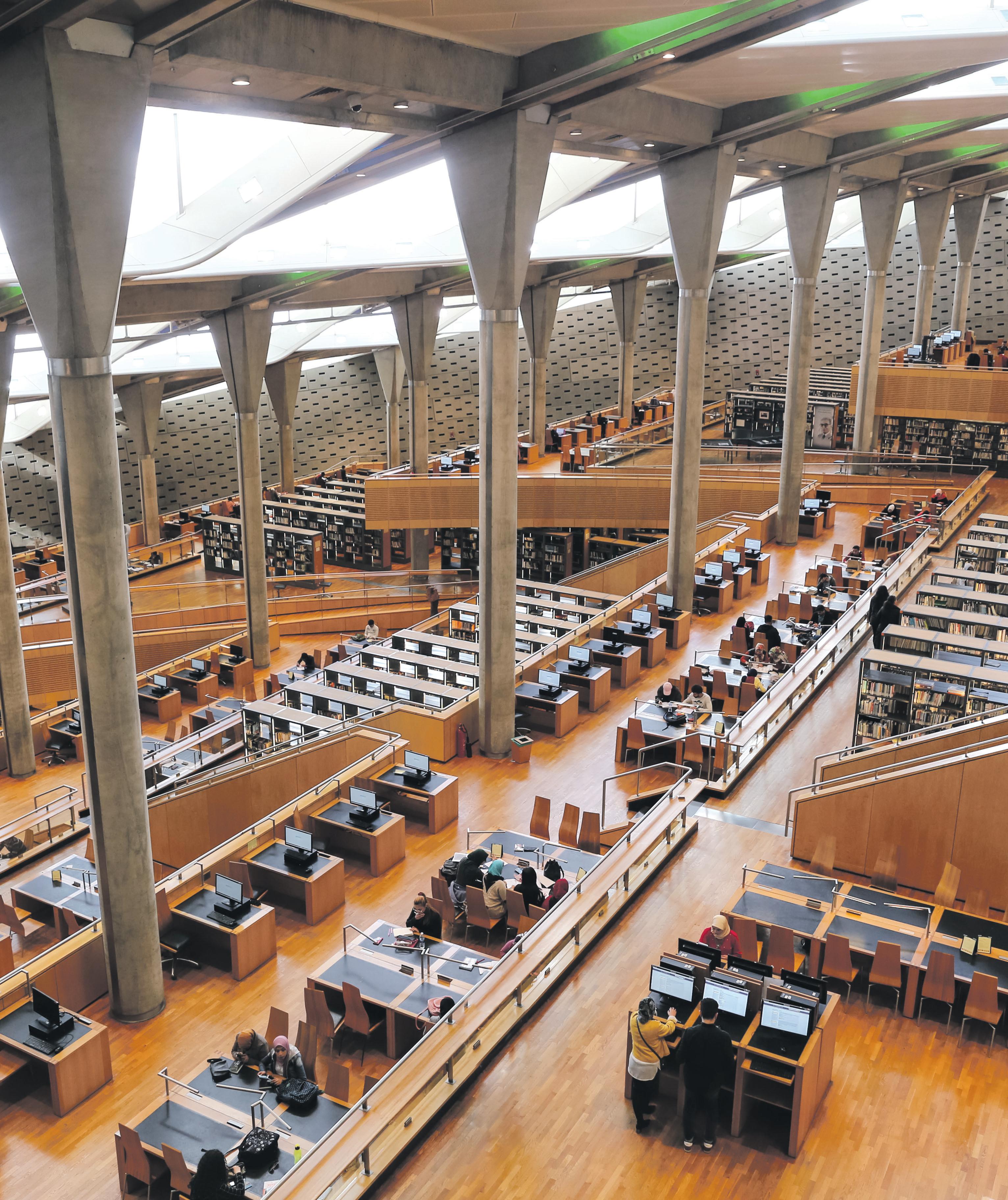
2002.
The Library of Alexandria in Egypt, designed by Norwegian architectural practice Snøhetta. Opened in October
Kalinbacak /
Booklaunch 82,000 distribution last issue Call us to stock Booklaunch at literary festivals, libraries and book clubs. Email book@booklaunch .london UK publishing’s biggest showcase of new titles. Our choice of extracts from the latest books and manuscripts For browsing without a bookshop Issue 6 Winter 2020 £3.75 www.booklaunch.london/audio-page Listen to our authors reading Former drugs czar David Nutt on drug policy Page 2 Protecting Saudi oil during Operation Desert Storm Page 4 A life in merchant shipping by Simon Quail Page 5 How Lady Betjeman hitched a ride to India Page 6 Sherlock Holmes’s search for Einstein’s lost daughter Page 7 Mary O’Hara pleads for an end to shaming the poor Page 8 Poles who found out they were Jews Page 9 The literature of Scottish devolution Page 10 The impact of war on the face of East Anglia Page 12 Ways to understand anthropogenic climate change Page 14 Literary art for sale through Booklaunch Page 15 How debt affected politics in the 1920s and 30s Page 16 The case for corporate stewardship in business Page 18 Should doctors prescribe love drugs and anti-love drugs? Page 19
Photograph:
Evren
Shutterstock
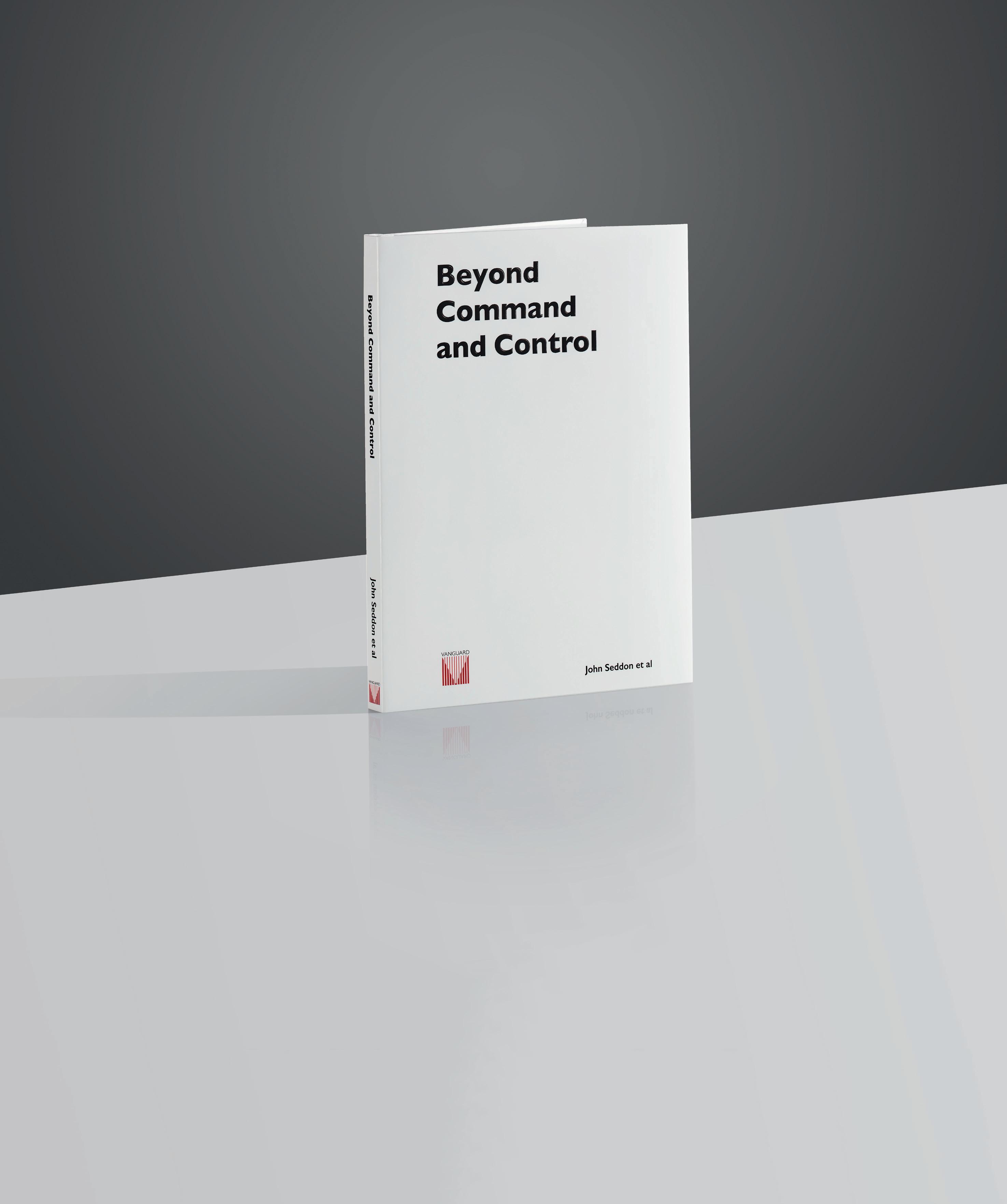

Many will remember me as ‘the government scientist who got sacked’. In many ways my departure from the UK government’s Advisory Council on the Misuse of Drugs (ACMD) was my reason for writing this book, so it makes sense to start the story there. I was earlier head of the clinical research ward at the National Institute of Alcohol Abuse and Alcoholism NIH Bethesda, Maryland, where I acquired the deep knowledge of the harms of alcohol that eventually got me sacked.
In October 2009, a lecture I’d given a few months before was released as a pamphlet on the internet. This got picked up by the media and I was interviewed on BBC Radio 4. This generated more interest and several more interviews. A few days later I received an email from the then Home Secretary Alan Johnson asking me to resign from my position as chair of the ACMD. When I refused he released a statement saying that I had been sacked.
The lecture that sparked off this chain of events had covered a number of topics, but all the media wanted to talk about were my views on cannabis. Cannabis was downgraded to Class C in 2004, but in January 2009 it was re-upgraded to Class B, indicating increased harmfulness; the change was made against the recommendation of the ACMD. The Home Secretary at the time justified ignoring the recommendations of our report because, the ‘decision takes into account issues such as public perception and the needs and consequences for policing priorities. ... Where there is ... doubt about the potential harm that will be caused, we must err on the side of caution and protect the public.’ In the lecture, I discussed whether this was a rational approach, and particularly whether putting a drug in a higher legal Class in order to ‘err on the side of caution’ would actually protect the public and reduce harm. And why did she not act on a drug where there was proof of harms—alcohol?
I’d entitled my lecture Estimating Drug Harms: A Risky Business? because I knew from experience that talking about the harm done by drugs in relative terms was considered politically sensitive. This had been made very clear to me when a scientific editorial I’d written, comparing the harms of ecstasy with those of horse riding, provoked questions in Parliament and an unhappy personal call from the Home Secretary.
There had been a similar reaction to another paper, which tried to rank 20 drugs in order of harmfulness, taking into account nine different sorts of harm, including physical, psychological and social factors. What was remarkable about this paper was our finding that alcohol was the fourth most harmful drug in the UK, below heroin and crack cocaine but above tobacco, cannabis and psychedelics. Since alcohol was legal this challenged the logic underpinning the drug regulations which were supposed to be based on harms.

Politicians didn’t like the idea of some drugs being openly acknowledged as ‘less harmful’ than others (or even worse, less harmful than legal drugs such as alcohol), because it might be seen as encouraging more people to use them, or make the politicians seem less ‘tough’ in the eyes of the tabloid newspapers. This is despite the fact that the purpose of having different Classes of drugs built into the Misuse of Drugs Act—or the US controlled drug regulations—is to communicate to the public a degree of relative harm. Class B drugs should be less harmful than Class As, and Class C drugs less harmful than Class Bs. Incidentally, many drugs that have medical uses are both covered by the Misuse of Drugs Act, and regulated by the Medicines and Healthcare products Regulatory Agency (MHRA) and the Medicines Act. In the US the situation is similar but the classification system uses Schedules rather than Classes and has more of them.
Which brings us back to cannabis—the only drug in the history of the UK Misuse of Drugs Act 1971 ever to be downgraded, following recommendations made by the Runciman report in 2000. After the downgrading of cannabis, however, the media, along with some politicians and medical professionals, became concerned that stronger forms of the drug (known as ‘skunk’) were causing serious mental illnesses such as schizophrenia.
There was certainly a legitimate question as to whether new breeds of cannabis were more harmful than the sort that had been considered by Runciman and the ACMD in the past. As the government’s advisory council, this is exactly the sort of issue that our research was supposed to address, and we undertook a
very thorough study—one of the most comprehensive ever. Our conclusion was that, although there probably was a causal link between smoking cannabis and some cases of schizophrenia, this link was weak and didn’t justify moving the drug up to the next Class. Yes, there was a risk of developing a serious mental illness after using the drug, but it was smaller than the risks posed by other Class Bs such as amphetamines, which can also cause psychosis. This was the message that we wanted to send to the public by keeping cannabis in Class C.
Certainly, nobody was calling cannabis safe. However, as my 2007 Lancet report had shown, across a range of different sorts of harm, cannabis was by no means as damaging as many other drugs, particularly alcohol. This was a point I made in my lecture, and which got picked up in the radio interview: ‘surely you can’t be saying alcohol is more harmful than cannabis?’ I replied yes, that’s exactly what I’m saying, it’s in the Lancet, on the front page of the Independent and the Guardian—so it was hardly a secret. But this question was repeated in the other interviews that week—everybody wanted the quote that alcohol was more harmful than cannabis. It was an entirely defensible thing to say, as it was based on my own scientific work, and backed up by a similar study from Holland which agreed that alcohol deserved to be ranked among the most harmful of drugs. In these interviews I also observed that the government had asked the ACMD to determine which Class cannabis belonged in, but then hadn’t followed our advice.
In a letter to the Guardian a few days after he sacked me, Alan Johnson explained that I ‘was asked to go because he cannot be both a government adviser and a campaigner against government policy.’ I responded that I didn’t understand what he meant when he said I had crossed the line from science to policy, and that I did not know where this line was. The ACMD was supposed to advise on policy, and indeed it was set up by the Misuse of Drugs Act because the legal Class of a drug is supposed to inform the public about relative harm, and those who designed the act recognized this was best determined by a group of independent experts. By acting against our recommendations, the government had themselves blurred the line between science and policy.
The subtitle of this book refers to making sense about drugs and the harm done by drugs whether legal or illegal. This has always been my primary concern as a psychiatrist, and what I always hoped the advisory body (the ACMD) and the UN were working towards. The upgrading of cannabis to Class B was the third time we had been ignored. (The other two were when magic mushrooms were made Class A without consulting us, and when the government refused to downgrade ecstasy to Class B despite our recommendation. These are all discussed in more detail in later chapters.) The longer the government persisted in creating policies that conflicted with the scientific evidence, the more harm those policies would do, not least because they undermined our ability to give a consistent public-health message, especially around the dangers of alcohol. The more hysterical and exaggerated any government was about the harms of cannabis, the less credibility they would have in the eyes of the teenagers binge drinking themselves into comas every day. If we’re going to minimize harm, we have to have a way of measuring it, and a policy framework that can respond to this evidence. Comparing the dangers of cannabis and alcohol was considered a ‘political’ act that overstepped my remit as a scientist and physician.
I am not the only scientist to have suffered the displeasure of governments. The UK Chief Medical Officer (CMO) Sir Liam Donaldson warned of the rapidly growing medical costs of alcohol use and recommended a policy of increasing the price of the cheapest drinks. His report was dismissed by the government, leading to his leaving the post early. The past-president of the Royal College of Physicians of the UK Sir Ian Gilmore was also ridiculed by the press and government when he shared his view that the current drug laws were not working, and that the personal use of drugs should be decriminalized as in Portugal.
The day after I was sacked, I received an email from Toby Jackson, a man with a keen interest in science, who was rather wealthy. He offered to fund an alternative independent expert committee that could carry out drugs research free from political interference. Together, we founded the Independent Scientific Committee on Drugs (since renamed DrugScience), and most of the scientific experts who resigned from the ACMD over my sacking joined the new group. (A few members have also worked with … continued in the book
Drugs without the Hot Air David Nutt


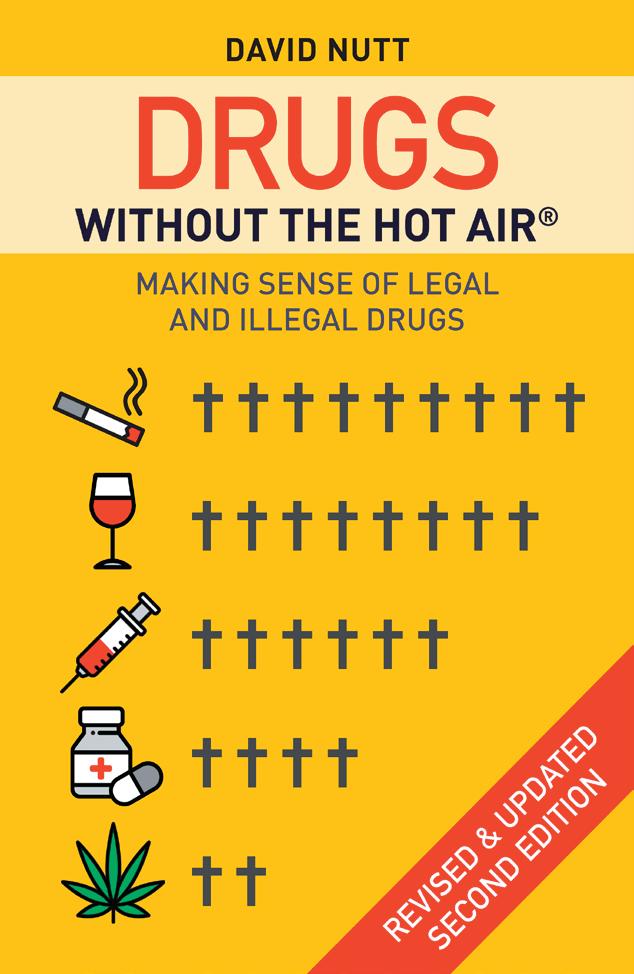
Former Government drugs czar David Nutt believes the debate on drugs remains hamstrung by prejudice, excusing alcohol while avoiding transparency on other substances. In Drugs without the Hot Air, he argues that the scientific objectivity that ought to guide policy and allow free choice continues to be ignored or devalued in the face of urgent questions about the nature of addiction, the dangers of vaping, the use of psychedelics to treat depression, and the extent and causes of the opioid crisis
David Nutt was at one time the UK Government’s chief drugs advisor. He is now Professor of Neuropsychopharmacology at Imperial College London, chair of DrugScience and President of the European Brain Council. He is also the inventor of “alcosynth”, a substance that mimics the pleasant effects of alcohol without causing a hangover

HEALTH & MEDICINE / POPULAR SCIENCE | ISSUE 6 | PAGE 3 This extract is taken from Chapter 1: Why Had to Write this Book
Making Sense of Legal and Illegal Drugs; Revised & Updated Second Edition Series: Without the hot air, UIT Cambridge, Cambridge, 400pp, Hardback, 9780857844941, 153mm x 233mm, 16 January 2020, RRP £18.99
Subscribe to Booklaunch www.booklaunch.london/subscribe From the same publisher
£2.28
price £16.71 inc. free UK delivery To buy this book, visit www.booklaunch.london/sales or point your smartphone here
Save
Our
Arabian Night Patrol Ian Thewlis
Saudi arabia
12 January 1991
26 Jumada 1411, 21.00
Nine o’clock and only three more nights before the war starts. Rob Watson urges Cilla, his black Labrador, into the back of the patrol car, settles her on an old yellow carpet, and drives out of Acacia Court for his first night back on patrol. Swinging right past Banyan and Cactus Courts, he turns onto Perimeter Road and cruises beside the high chain-link fence of the airbase, headlights searching for breaks in the wire. Even at this time, the oil camp’s streets and courtyards are deserted, people huddled in their homes waiting for the next news bulletin, the first Scud alerts to start wailing out. But soon he’s feeling comfortable inside the patrol car, with the company’s Easy Listening music muttering over the radio and Cilla stretched out on the back seat, shifting occasionally to raise her head, look around, and settle back again.




Next year marks the thirtieth anniversary of Operation Desert Storm when a US led coalition of Western and Arab forces attacked Iraqi troops occupying Kuwait. Arabian Night Patrol is an international thriller about a desert oil camp in Saudi Arabia during the First Gulf War at the start of the War on Terror. The novel deals with issues that still haunt the Middle East and its relations with the West today
As he left the house, CNN were reporting that James Baker, the US Secretary of State, was visiting the airbase, checking the preparations for war. Now, beyond the perimeter fence, the base lies waiting, brooding through this wintry night, and gathering itself to attack. On this side, the oil camp’s courtyards are silent, oblivious to what Rob knows is the frenzied activity over there: trucks shuttling aviation fuel and supplies along the roads, the candy men loading planes and helicopter gunships with munitions, pilots being briefed for their reconnaissance flights over Iraq and occupied Kuwait. Yet despite the sharp silhouettes of hardened shelters, the pinpricks of light in the gloom marking the giant Galaxy transports, that feverish activity is difficult to imagine here, cruising slowly along by the perimeter fence.
He drives down towards the Utilities Department, its illuminated Pepsi vending machine standing guard outside the office building. Further along, the still waters of the sewage treatment ponds glisten under yellow sodium lights. The emerald grass around these ponds was recently mown and he remembers reading in the company newspaper about a crazy golf competition there, an event designed to publicize the company’s new sanitation system.
Next stop, the camp garage. Old cars and trucks are parked haphazardly outside, abandoned when their owners fled after Saddam Hussein invaded Kuwait and threatened Saudi. Rob pulls into the space between a white Ford Transit and a Toyota pick-up with black garbage bags dumped in the back. Facing the padlocked gate, his headlights beam through the wire mesh onto the garage forecourt, the vehicles parked for repair and the inspection ramp curving up into the night sky. He gets out, scanning the area with his flashlight, checking for suspicious movements beyond the beam of his headlights. The smell of gasoline that always hangs over the camp is usually strongest here, but the chill wind from the sea is dispersing it, threatening more rain and discomfort for the troops camped up north near the Kuwaiti border. It’s the coldest and wettest Saudi winter he can remember, and he zips up his Security windbreaker and pulls the baseball cap firmly down on his head.
No lights show in the garage workshops where the remaining Filipino mechanics devote evenings and weekends to their private business, repairing Westerners’ cars and four-wheel drives. Behind the garage he can see the junk yard’s piles of rusting parts, with two large metal containers parked up against the fence. ‘It’s a weak point,’ warned Rick, the big American security boss, when he drove Rob around before Christmas. ‘Better stay alert.’
But tonight there are no suspicious movements. He reverses back onto the road, driving down towards the grove of palm trees screening the agricultural research station. He cruises into the car park, headlights washing over the dimly lit plant nursery and greenhouses, where tomatoes and cucumbers grow in plastic tubes without soil, sustained only by running water enriched with plant food. The tops of the palm trees are swaying in the breeze. The car is warm and comfortable inside, and he winds down the driver’s window. Already he’s feeling tired, needing this blast of cold air.
Past the agricultural station, the road turns sharp right, heading towards the lights of the bachelor housing block. But he drives straight on, following the chainlink fence. With a bump, he leaves the tarmac and pulls onto an unlit dirt track used by garbage trucks going to the landfill site. He drives more cautiously, headlights scanning the rough track and manoeuvring between
potholes. Before the invasion, this wasteland with its mounds of rubble was a testing ground for teenagers racing BMXs and dirt bikes. After the invasion, most kids were evacuated with their mothers, back to homes around the world. He wonders how many will return. And will Fiona, his wife, ever come back?
Headlights pierce the gloom and a US army Humvee, with a searchlight and machine gun mounted on top, bounds along the track on the other side of the fence. Spotting the white patrol car, the base guards flash their lights, acknowledging their common purpose. They’re heading towards the Patriot battery hidden among the small limestone jebels, rocky perches overlooking the airbase, waiting to shoot down missiles attacking the base. The Pentagon has spent billions of dollars on missile defence systems but will this Patriot work? At first the Americans and British said that Saddam’s Scuds couldn’t even fly this far, but now they say they’ll shoot them down.
Rob parks and lets Cilla jump out to roam around while he walks up a small jebel where he can smoke a cigarette and perhaps spot James Baker’s plane on the tarmac. Five years since he stopped smoking, but for this time and place he’s awarded himself the luxury of just one Marlboro cigarette each night.
Lighting up, he savours the deliciously illicit taste, this moment saved for tranquillity, and looks across the base. The shapes of hardened shelters and barracks stretch into the distance, and the low moaning vibration of generators carries on the wind. It feels like he’s living next door to a friendly giant who’s kindly offered to take care of him. Or a mass murderer, whose surreptitious movements disturb him during the night, but who he sees him in the morning, waves cheerfully on his way to work.
No sign of James Baker’s plane. Perhaps he’s already left. Rob wonders what he should think about tonight to while away the hours on patrol. Football? He and Chris, his student son, went to Anfield on New Year’s Day to see the Reds beat Leeds. So, are Liverpool going to win the League this year?
Or maybe he should think about his family. Back in Southport, on his last night at home, his parents and some friends phoned asking if he was still going back to Saudi. It was obvious there was going to be war and maybe thousands killed. Not sure whether he sounded brave or just foolish, Rob told them he was returning and gave his usual reasons—that he wouldn’t be dictated to by Saddam Hussein, that people at work depended on him, and that he had to go back for Cilla, the family dog. Nobody seemed convinced.
After dinner he had sat drinking coffee with Fiona and Chris round the kitchen table. ‘So why are you really going back, Dad?’ asked his son, more confident after his first term at university. ‘Is it the money?’
Fiona didn’t join in the questioning. He was conscious of her strained expression, her determination to let him make his own decision, no matter how ill she felt. But how ill was she? He’d been reluctant to inquire too deeply as she might flare up at him. She’d seen the doctor about headaches and depression and returned with some pills. Hopefully, they’d work.
In just a few months he’d complete ten years and qualify for full severance benefits. ‘I’m coming back after ten,’ he’d promised Fiona, as he nuzzled into her hair at Manchester airport. ‘Only a few months to go.’
Now he crushes his cigarette into the sand, strolls down the bluff to the patrol car and opens the back door to let Cilla jump in. On the radio, Phil Collins is singing about something in the air tonight, as Rob checks in with the Big House.
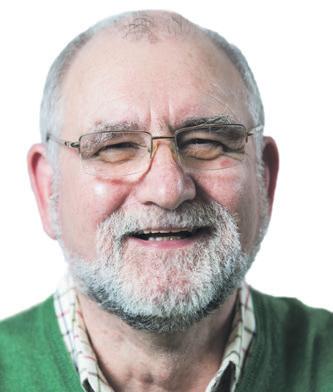
‘Assalamu alikum. Welcome back to Paradise, my friend.’ Abdul Karim—Al to his Western colleagues— greets him through the crackling, his Texan accent a legacy of detective training in Dallas. ‘How’s the family? You have good Christmas?’
‘Good. So how’s your family, Al?’
‘Zain. I take to Riyadh for safety. Only strong men stay for this war, sideeki.’
Al’s usual good humour sounds constrained. Is Rick, his American boss, listening in?
‘You see Mr Baker?’ Al asks. ‘He’s visiting the guys at the Base.’
‘No, he’s probably left. Nothing to report here. All’s quiet.’
‘Alhamdullilah. Good to know you’re back, my friend. But be careful out there.’ Al concludes with the familiar warning from the roll-call sergeant in Hill Street Blues
INTERNATIONAL THRILLER | ISSUE 6 | PAGE 4
This extract is taken from the start of Chapter 1: Another Night in Paradise
… continued in the book
Silverwood Books Ltd, Bristol, 274pp, Softback, 9781781328194, 148mm x 210mm, April 2019, RRP £8.99
Subscribe to Booklaunch www.booklaunch.london/subscribe From the same publisher
Ian Thewlis taught at colleges and universities in the UK, Libya and Nigeria before joining the Middle East oil industry. He has written books on business but now devotes his time to writing fiction. Arabian Night Patrol, the first novel in a planned trilogy tracing the birth and development of the War on Terror, draws on his experience of Saudi Arabia and Kuwait, the start of Al Qaeda and the subsequent invasion of Iraq
Our price £9.99 inc. free UK delivery To buy this book, visit www.booklaunch.london/sales or point your smartphone here
Fifty years ago I boarded the first of 37 merchant ships and went to sea. I experienced a way of life no longer available to the modern mariner.
In August 2019 the world’s largest container ship the MSC Gülsün arrived in Europe from China. She can load an astonishing 23,756 standard container boxes. At 1,300 feet long, MSC Gülsün—247,900 dwt—is three times the length of my first ship, MV Deido and carries 26 times more cargo. Built 58 years before, Deido was 450 feet long 9,400 dwt and needed a crew of 50 to man her engine room, maintain and work her 22 derricks and five hatches, and keep navigation and cargo watches. In 1965 Elder Dempster’s entire fleet of 49 merchantmen reached its peak total of 293,853 gross tons. That fleet required approximately 2,000 officers and crew. Despite her size, MSC Gülsün needs a crew of just 26.
This scaling up of vessel size and scaling down of crew numbers is a dramatic illustration of the vast changes experienced in the world of marine transport.
And of the life at sea—and long days in port—experienced in my day? All gone. In 50 years.
We may need fewer crew and ships but we still import by sea 95 percent of the goods that Britain needs every day. That is eight tonnes for each person in the UK. It would surely be good for the balance of payments deficit if the Red Ensign flag were flown on more British-owned vessels.
Data from the Department of Transport shows that the number of British-flagged ships fell by more than a third between 2009 and 2014, but 2019 figures from the UK Chamber of Shipping show that since 2015 fleet tonnage has picked up 12 percent to a total of 16.7 million GT and is now the world’s 14th biggest in terms of tonnage. Of 537 UK flagged vessels, 277 were registered to UK companies.

International shipping is a growing industry. If Britain played its part in not only providing officers and men but in financing UK shipping companies, as we used to 50 years ago, then this island nation could begin to reclaim its proper place sailing the world’s oceans, navigating us more securely through stormy economic seas.
The numbing cold of riveted steel decks plates has leached into my boots. My ears still echo with the clang of chipping hammer on rusty hulls. The smell of Brasso immediately invokes polished portholes.
I have witnessed myriad sunrises and sunsets over steel grey horizons and smoky headland, and stood lookout under a canopy of glittering stars. From bridge or bow I have had a grandstand view of dancing dolphin pods, shocks of flying fish and stuka-diving gannets. Snug in a hammock rigged on the monkey island I have been lulled to sleep by a gentle swell. Like a wild horse in bucking seas, the kick of the deck has sent me sprawling. I have been covered with choking cargo dust, and been threatened by rope, wire and heavy block. I survived. But three ships and many of their crew did not. They sank into the deeps, lost forever.
To me ships are not a prosaic construction of steel and machinery. Every time I read that a ship has been broken up, it hurts. It hurts because these ships were my home, the home where I ate, rested, worked, played, sometimes drank too much, sometimes enjoyed parties on board. Slept. Woke up to another day as my ship sailed inexorably onward, laying a silvered wake across a carpet of deepest blue.
We crew lived together for months on end, shared good times and bad times, in rough weather and glorious. Went ashore together. Came back to our ship. Glad to be back after a good run ashore. But sometimes sad to be stuck on board and wishing to be home.
The older the ship, the greater the character. The Glenorchy, built in 1941, had 27 years of history rammed into her deck caulking when I joined her and countless thousands of marine encounters under her keel. Ships built in the 1980s had less charm, built to be efficient steel boxes but still carrying the freight of mariners’ lives, their hopes and fears, their dreams and sodden realities.
‘Scrapped at Kaohsiung’ may be an acknowledgement of a commercial reality but it was a heartless epitaph, a kick in the teeth to the sentiment we mariners felt about her, our ship. It wasn’t about economic turnover for the sailor. Her loss was a loss of memory, a loss of shared experience, of a voyage safely completed. ‘Finished with Engines’ was only meant to be for now, this port, not for ever. I felt that most strongly when leaving that old rust
bucket, Rogate. I was the last man aboard. The last to feel her as a living vessel before she became a steel hulk and was razor bladed.
These ships also made a ship owner a minimal profit. When that thin margin vanished, the sentence was to suffer the ultimate indignity of being scrapped, taken to the knacker’s yard in Europe, India or Taiwan.
Some ships arouse feelings of unreasonable dislike, usually due to a master careless of his crew, or poor maintenance. Ships have to be cared for, by captain to cabin boy, from bridge to keel, from cable locker to propeller. Or they turn nasty on you.
In seeking to discover meaning in my own life I have discovered that ships have a life of their own, worthy of celebration. And commemoration. These ships and men have vanished from the seas. I tell my tale so that the vessels and those who lived on board will not be erased from our national memory.
To climb up a gangway is to commit yourself to the ship, trusting her (for a ship is always feminine) to complete the voyage safely, to survive the unknown encounters ahead, be it storms or hidden rocks.
To climb a gangway is to seek life beyond.
To step down the gangway onto solid land is to give up an unspoken expression of thanks for the voyage safely completed, the biblical chaos of the waters survived.
A ship’s gangway is the link between the hidden worlds of life at sea, over the horizon, and the more known world of life ashore. A gangway invokes a complex metaphor of the link between the solidity of the land and the mysterious, often dangerous, instability of the seas and oceans that circle our planet.
The call of the sea was in my blood. I discovered several years ago that my great-grandfather and great-great-grandfather were both master mariners. Thus it was, even though I lived in a Cotswold hamlet one hundred miles from the nearest sea, that sea salt flowed in my veins. After the gangway had been hauled in and the ropes let go, and we set sail away from the safe, solid shore, I wanted to discover what lay beyond the distant flat horizon.
Every time I joined my ship, every time I went ashore, from Archangel to Yokohama, the gangway was the link between these two contrasting worlds.
I have learned that once a sailor vanishes over the horizon, he is forgotten by the landlubbers who remain ashore. The mariner is no longer held in close affection by the community memory because so few British men and women go to sea. There are no longer, as in my day, the numerous family connections to those who follow the call to go a-roving, very few left behind who talk about absent fathers and brothers away for up to two years at a time, leaving behind ‘grass widows’ to bring up families all alone. There is no residual understanding among landlubbers, and the seafarer’s life is a lost world.
The wake of life stretches away behind us, silvered by a rising moon of memories, its ghostly illumination casting a pale light on recalled events. This memoir is an evocation of my past. You may have similar memories of a time when the British Merchant Navy was at its peak, when 3,000 British ships under the Red Ensign—the Red Duster—plied the oceans of the world, manned by British officers and sailors, under conditions that have never been bettered.
For centuries the ships of the British Merchant Navy carried the lifeblood of Britain, their bulging holds crammed with goods to satisfy every perceived need and luxury, to sate the population’s appetite.
Not now. These arteries have had a transfusion of foreign bodies. Ships have grown huge and fat. They are rarely sustained by British blood. Their stories belong to other shores.
My story is of seafaring five decades ago, of men like me who filled the fridges of families with groceries, manufactories with raw materials, foundries with base ores, who then sailed away to live their lives over a distant horizon.

So climb up the gangway and glimpse a world long gone, a world which shaped and sustained a nation.
Tottering along the narrow slippery deck of the submarine I headed towards the access hatch and scrambled down the ladder. Inside the narrow steel tube all was strange: smells of hot oil, steel and stale air. I peered into the periscope eyepiece. The images of ships in the Solent appeared to be upside down.
After a whirlwind tour we left that claustrophobic, windowless world.
‘Do hurry up! And take care!’ gasped my mother confusingly,
Gangway: A Life at Sea Simon Quail
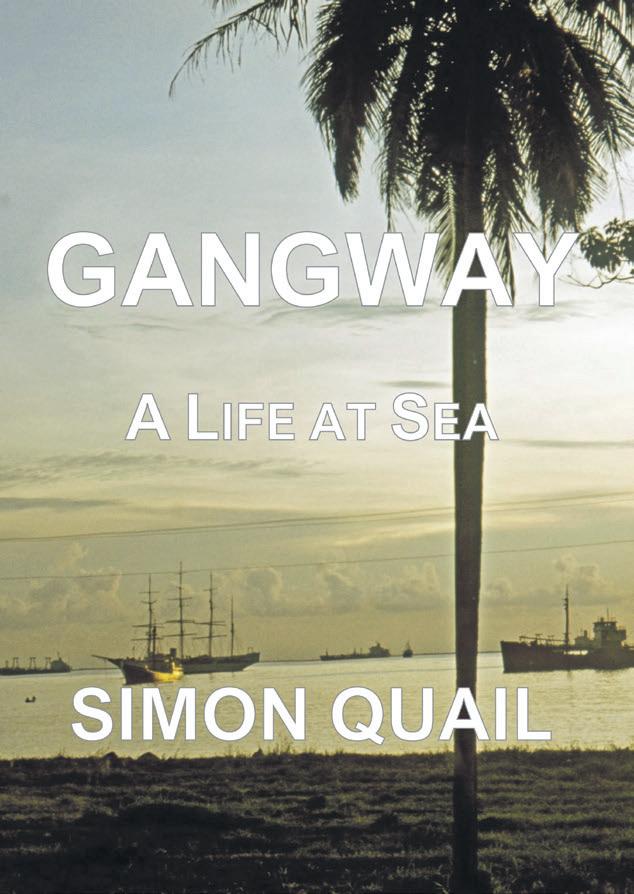
Life at sea has shrunk as ships have grown fat. In Gangway Simon Quail looks back at the challenges faced by cadet, navigator and chief officer in the last age of the general cargo motor ship, but before the age of the supership. More than a personal memoir, Gangway offers a reminder of a world long gone, of the camaraderie among large crews at work aboard, and of adventures ashore during days in port
Captain Simon Quail went to sea as a deck apprentice in 1966 when the British Merchant Navy was at its height. Employed by 11 very different shipping companies, he sailed the oceans of the world for 20 years, serving on three dozen ships as a deck officer on general cargo ships, passenger ships, chemical tankers and bulk carriers. Now retired, he is a Liveryman of the Honourable Company of Master Mariners
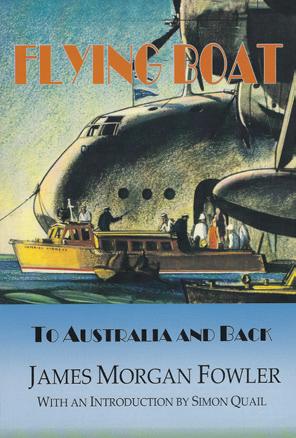
MEMOIR / SHIPPING | ISSUE 6 | PAGE 5
This extract is taken from the Introduction and Prologue
… continued in the book
Racing Rabbit Press, Rudgwick, 288pp, Softback, 9780244751692, 145mm x 201mm, Illustrated, September 2019, RRP £9.99
From the same publisher
Subscribe to Booklaunch www.booklaunch.london/subscribe Our price £9.99 inc. free UK delivery To buy this book, visit www.booklaunch.london/sales or point your smartphone here
Summoned by the Hon. Mrs John Betjeman Christopher Maycock

‘I’m coming with you, Dickoi darling!’ crowed the Hon. Mrs Penelope Betjeman. She had just heard that medic Dick Squires had organised a mixed party of four young people—he and I, Elizabeth Simson, a talented artist friend of Dick’s sister, and Dick’s American girlfriend, Isobel—to travel overland to India in September 1963. For five years Dick had been dreaming about this trip. Now his fantasy was coming true.
Penelope had been on the point of flying to India to rediscover the Kulu Valley, retracing on ponies the steps she had taken in 1931 with her mother Lady Chetwode, wife of the Commander-in-Chief in India, Lord Chetwode, so an overland journey with us was preferable to taking a plane, and considerably cheaper. In the days before budget airlines British Overseas Airways Corporation (BOAC) was expensive and served only major cities, making the overland route the most practical way to explore Middle-Eastern countries.
Penelope had some time earlier told the Tatler magazine, in an article entitled ‘Summoned by Temple Bells’, that there was ‘nothing at all surprising’ in setting out on an 8,000-mile journey to India. ‘Having looked after my husband and children badly for 30 years I need a break, don’t you think? … Everybody nowadays wants to do things like crossing a continent by Mini, but if you do it, you need to choose carefully. You must have people who can deal with an appendix in the desert and take out an engine by the light of a candle.’
The Orient fascinated us, especially Turkey, Persia, Afghanistan and the Indian sub-continent, but our experiences were considerably enhanced by Penelope’s presence as the elder mentor, who insisted on visiting historical sites and regaling us with stimulating ideas. Indeed, the journey opened our eyes to the remarkable interdependence of the architecture and religions of the regions visited—unwelcome though this perception may be to some believers.
Young Englishmen often travelled abroad before settling down to a career; the Grand Tour was as much a rite of passage in the 18th-century as the deb’s coming-out ball in the 19th. But what was it like to travel overland to India in the early 1960s, just ahead of the hippie trail? And what was it like to travel with John Betjeman’s 53-yearold wife—daughter of the former Head of the Indian Army and a specialist in ancient culture? Christopher Maycock kept a diary
Christopher Maycock is ex-senior partner and GP trainer in a Mid-Devon medical practice. He was educated at Pembroke College, Cambridge and St Thomas’ Hospital London, and gained a Certificate of Theology (Distinction) at the University of Exeter. He is an Honorary Fellow of the Woodard Schools Corporation and has lectured in The Hague, at South-West Medical Centres, The King’s Fund, The Wordsworth Trust and Chawton House Library. He enjoys astronomy and country sports, is married to Rachel and has twin children, James and Charlotte
Dick and I met at the Betjemans’ house in Wantage, Berkshire, now in Oxfordshire. The future Poet Laureate sat comfortingly and benignly in his study—not surprisingly, perhaps, as Penelope’s absence would give him free rein with his long-standing amour, Lady Elizabeth Cavendish. But it was also the beginning of a new lease-of-life and freedom for Penelope, who had been much saddened by the rift with John.

The Betjemans’ interests were as different as chalk and cheese. John was intrigued by Victorian architecture; and as he said to Edward James, ‘Isn’t abroad awful?’ Penelope was a mine of information on many religions and an intrepid, exotic traveller. Both were enthusiastic Christians, but in significantly different ways: John a High Anglican with a fear of death and prone to guilt; Penelope a convert to Roman Catholicism, full of optimism and bouncy high spirits—not an easy match yet remaining fond of each other to the end. We thought it was remarkably game of Penelope at 53 to be joining our trip.
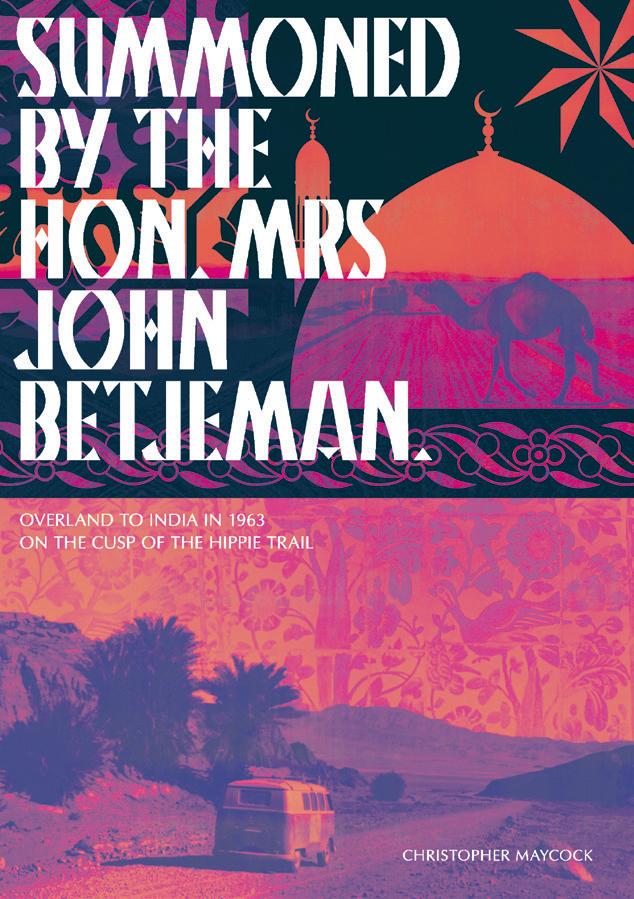
In Istanbul we met Mrs. Warr, the Consul-General’s wife. One of the benefits of having Penelope on board was that news of our journey preceded us. She was the draw, with the tedious snag for hosts that we were part of her retinue. Mrs Warr, welcomed us at the splendid building set in a small, very English garden, originally the British Embassy, the second largest in the world and designed in part by Sir Charles Barry, renowned for his Reform Club in Pall Mall.
The following night Penelope and Elizabeth, craving the meagre joys that Istanbul could offer, stayed in a hotel, while the rest of us drove out to a deserted quarry for a meal of beef stew, sweet peppers and potatoes, which Dick was overjoyed to be cooking himself.
Mrs Warr had invited the whole party to lunch the next day, so we dressed up. It seems amazing in retrospect that we had brought dark suits, ties and clean shirts, which we donned in the clayey ground of the quarry, Dick scrubbing himself down naked like a buffalo and Isabel making up in the VW’s wing mirror. Penelope and Elizabeth had endured the night in their ghastly hotel where rats could be heard running around the attic. The Warrs’ lunch at the Consulate was magnificent, served by an impeccably correct Turkish waiter: mussels in batter followed by fried chicken accompanied by chestnuts and exotic vegetables washed down with
red wine. A fluffy pudding concluded the feast—all most welcome after wet nights and camp life.
Forty years later Al-Qa’eda terrorists suicide-bombed the Consulate, killing the Consul-General and a number of Turks.
Passing through the old quarter of Ankara, we collected Elizabeth and Penelope from the Museum. Off again! At sunset, we reached the town of Nevshehir, approached through a deep gorge and built on the side of a steep hill topped by a fortress. In spite of Kemel Ataturk’s reforms, many women here were still in purdah. Originally Nevshehir had been the town of Nazianzus, seat of bishop and theologian Saint Gregory Nazienzen, one of the great fourth-century Cappadocian Christian Fathers.
Camping well out of sight of the town in a stubble field, the pattern of our camp routine became finally established. I erected the tent while Dick and the girls unpacked. Penelope was chief chef with Dick assisting, though allowed to be in charge once a week. The girls peeled the spuds and cut up onions while I wrote the diary. After the meal, I assisted with the washing-up if the diary was finished. On that chilly night, Penelope eased the party to sleep with readings from Plato’s Life of Socrates
Rising early the next morning, Penelope climbed a nearby hill with Dick to photograph the sunrise. The views from the fortress of Nevshehir were superb. The occasional tourist, arriving in an expensive American taxi and wearing smart Western clothes, seemed incongruous among the local people, who travelled on foot and by donkey, many of the women veiled in yashmaks. A middle-aged woman with a weather-beaten face brought her daughter to me. It seemed that she wanted to sell her—there was no other way to interpret her gesticulations. The girl was sweet and shy, and wore a headdress edged with shining metal beads. I managed to turn the offer down, I hope without implying that the goods were in any way unacceptable.
A young man, followed by 30 inquisitive townsmen, led us to a backyard on the edge of town. It was crowded with chickens, cows and a few braying donkeys. Penelope selected two chickens. But aware, as she saw it, of the Islamic method of killing them by slitting their throats and allowing them to bleed to death, she was determined to slaughter them in the ‘humane’ English way by wringing their necks. There were murmurings of disquiet in the crowd, who couldn’t believe the birds were dead, when Penelope started to pluck them as their limbs twitched reflexly. It was an unforgettable image, to see Penelope bent down in the middle of a now aggressive crowd, her tweed-skirted backside haloed by flying chicken feathers. It said much for the tolerance of the Turks that we escaped unscathed, despite breaking one of their major Koranic religious taboos against eating the flesh of a strangled animal.
During the afternoon at Pasargadae, Cyrus the Great’s Persian capital, Penelope enquired if she might have a ride on a horse, which David Stronach the archaeologist then arranged. A scraggy-looking nag, with a tall, thin and even scraggier owner arrived at 5.00 pm, an hour late. He was obviously expecting to lead it and Penelope gently round the field by the reins. But no one had told him that Penelope was used to hunting with the Old Berks. He was astonished when she marched out of the hut in riding breeches, smart brown riding-jacket, shirt and cloth-tie. The horse and Penelope hit it off immediately, breaking loose together and cantering across the plain. It turned out that the man was not the owner, which partly explained his anxiety. As he saw a small cloud of dust disappearing into the distance, he must have imagined that a female horse-thief was stealing his stallion. Horrified, all he could gasp was, ‘Asp chahar kilometer, asp panj kilometer’ ‘Horse four kilometres, horse five kilometres’. He nearly had a fit when I countered with, ‘Asp davazdah kilometer’—‘Horse twelve kilometres’. Penelope returned from her exhilarating ride an hour later, still firmly mounted on the horse.
Just before Ghazni in Afghanistan, we stopped for Penelope’s most welcome porridge, boiled eggs and coffee. It was 20 November. The Afghan winter had arrived. Penelope announced that Dick and I must shave off our beards. She refused to cross the frontier of what had once been British India with bearded Englishmen. She herself donned riding breeches, smart shirt and tie, powdering
TRAVEL HISTORY & HUMOUR | ISSUE 6 | PAGE 6
This extract is taken from passages throughout the book
… continued in the book
Overland to India in 1963 on the Cusp of the Hippie Trail Bookcase, Carlisle, 341pp, Softback, 9781912181148, 150mm x 212 mm, .128 b/w illustrations, October 2018, RRP £16.00
Subscribe to Booklaunch
From the same author
www.booklaunch.london/subscribe
Our price £16.00 inc. free UK delivery To buy this book, visit www.booklaunch.london/sales or point your smartphone here
Albert Einstein was born in Ulm and grew up in Munich, bustling, wealthy towns in the Swabian region of southern Germany. At the age of five he was shown how a compass needle always swings to magnetic North. From that moment he determined to become a great physicist, more famous than Isaac Newton.
At 23 Einstein sired an illegitimate daughter with Mileva Marić, a fellow physics student at the Zurich Polytechnikum, who later became his first wife. No one to date has solved the mystery of the infant’s fate. Mileva and Albert referred to her by the Swabian diminutive ‘Lieserl’ Little Liese. Her life was fleeting. At around 21 months of age she disappeared from the face of the Earth. The real Lieserl may never have come to the eyes of the outside world but for an unexpected find, 83 years after her disappearance. In California, Einstein’s first son, Hans Albert Einstein, investigated an old shoebox tucked away on the top shelf of a wardrobe. It contained several dozen yellowed letters in German type, exchanges between Albert and Mileva. Italian, Swiss, German and Austro-Hungarian postmarks reflected their peripatetic life. Letters dated between early 1901 and 1903 mention Lieserl. After September 1903 her name never appears again, anywhere.
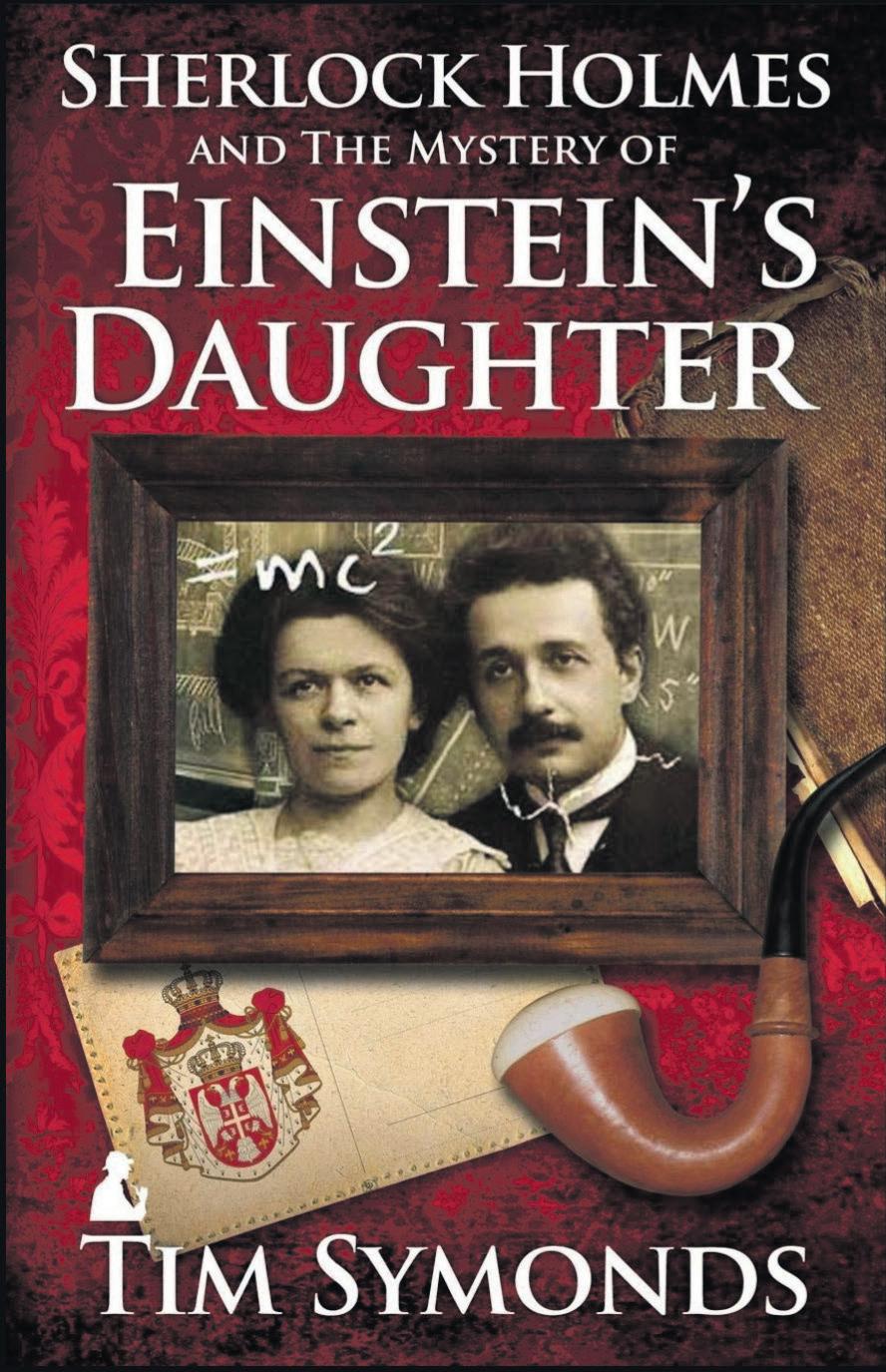
Lieserl remains a subject of mystery and speculation. Researchers regularly trek to Serbia to conduct investigations. They comb through registries, synagogues, church and monastery archives throughout the Vojvodina region, the place of her birth and short life, but to no avail. In The Mystery of Einstein’s Daughter Holmes exclaims, ‘the most ruthless effort has been made by public officials, priests, monks, friends, family and relatives by marriage, to seek out and destroy every document with Lieserl’s name on it. The question is why?’

As the American scientist Frederic Golden put it in Time magazine, ‘Lieserl’s fate shadows the Einstein legend like some unsolved equation.’
Three hapless ‘must have’ theories hold sway. Lieserl must have died in an outbreak of scarlet fever in NoviSad in the late summer of 1903. She must have been adopted by family friends in Belgrade. She must have been placed in a home for children with special needs.
In The Mystery of Einstein’s Daughter, Holmes and Watson are led to a dramatic Fourth Theory.
PRELIMINARIES BY DR. JOHN H. WATSON, LONDON
The events I relate in The Mystery of Einstein’s Daughter took place well into the reign of King Edward the VII, the year in which the Simplon Tunnel was driven through the Alps and when Charles Perrine discovered Jupiter’s seventh satellite, Elara. In faraway South Africa, Thomas Evan Powell brought the Cullinan, the world’s largest rough diamond, to the surface. In England there was talk of a new automobile association employing cycle scouts to help unwary motorists avoid police speed traps.
Sherlock Holmes held Albert Einstein’s future in his hands.
In the spring of that year, my comrade Sherlock Holmes undertook an investigation into what at first appeared to be a very humdrum matter concerning a recent graduate of the Physics Department of a Swiss Polytechnikum. It turned out not to be so humdrum a matter after all. The young man’s name was Albert Einstein. He was soon to become the world’s most revered scientist, gaining fame and respect the equal of, or greater than, presidents and prime ministers.
1: I AM OFFERED A COMMISSION
CHAPTER
Early in 1905 the Strand Magazine’s publisher, Sir George Newnes, approached me with an offer: would I accept the kingly sum of six hundred guineas in return for securing a photograph of Sherlock Holmes at the now-infamous Reichenbach Falls in the Bernese Oberland? Sir George wanted an engraving or half-tone illustration from the plate to grace the Strand’s Christmas cover. The Falls were the site of the death of the arch-criminal Professor Moriarty at the great detective’s hands fourteen years earlier, on 4 May 1891. Six hundred guineas was the equal of three years of my Army half-pay pension, hard-earned in the arid Pãriyãtra Parvata and a pestilential stint at the Rawal Pindi Base hospital, both of which I deemed myself lucky to have survived.
‘A front-cover picture of Sherlock Holmes at the Reichenbach Falls will increase the run by at least a quarter of a million,’ Sir George opined gleefully.

He was right. A cover reprising Holmes’s miraculous escape from a watery grave at Moriarty’s hands would generate a welcome boost to sales.
Until his reappearance some three years later, it was believed that my great comrade had died in the struggle with Moriarty. During this Great Hiatus the obscure mountain stream and waterfall soon became a place of pilgrimage. The nearby Englischer Hof guest-book was filled with guests’ comments, keen to pay their respects. Visitors included the New York Police Department alongside a delegation from the French Sûreté led by Monsieur Dubuque, and James McParland of the Pinkerton National Detective Agency. Troupes of young London City men and members of the burgeoning Sherlock Holmes societies travelled to the Falls in charabanc loads, wearing bands of black crêpe around their bowlers. Gaggles of women dressed in long grey travelling cloaks clustered at the cliff edge, staring silently down. Some cast a facsimile of Holmes’s fore-and-aft cap (on sale at the local hotels) into the roiling waters below. The suicide watch at the cliff edge, normally posted for forlorn young lovers, now looked out for lone figures of distraught men and women ready to throw themselves into the chasm after the man they called ‘the Master’.
The Strand would pay all costs for a journey retracing our original route. Holmes and I would tread once more in the footsteps of Goethe, Tolstoy and Nietzsche along the charming Rhone Valley. Sir George wanted the photograph to show Holmes standing on the lip of the chasm, down which Moriarty tumbled (or rather, had been tumbled) to his end. The photograph was to capture the atmosphere of Jacques-Louis David’s Napoleon at the Saint-Bernard Pass as Bonaparte himself put it, ‘Calme sur un cheval fougueux’. In the picture, my comrade-in-arms should stare down on the torrent, behind him crags piled one on the other. My publisher had looked at me quizzically. Did I think Holmes could be persuaded to strike a chord on his violin, staring down over the precipice as though viewing Moriarty’s body cannonading from rock to jutting rock?
I replied that it was a ludicrous idea. The spray from the rushing torrent would badly upset a Stradivarius.
My publisher’s wish for an exclusive front-cover to boost sales was understandable. The publishing business was becoming highly-competitive. The daily journey to work for large numbers of the population had triggered a demand for reading material from newspapers such as the Daily Mail and magazines with short articles and stories. Titles like the Harmsworth Magazine or Pearson’s Magazine offered articles of scientific and historical interest, cartoons and celebrity gossip. The Strand looked over its shoulder at the rapid growth of a particularly vulgar halfpenny dreadful, the Penny Blood Union Jack magazine, popular with young men. The Union Jack’s circulation had been lifted by the adventures of the upstart detective Sexton Blake, the poor man’s Sherlock Holmes, and his scent hound Pedro. Another rival was Hornung’s disgraceful invention, A. J. Raffles, the ‘gentleman thief’, whose criminal exploits promoted the sales of Cassell’s Magazine
In the early stages of the Great Hiatus I was approached only once for assistance by Lestrade, the ferret-like Scotland Yard inspector. On this occasion, through my medical knowledge, I was instrumental in solving a crime dubbed by the Evening Standard, ‘The Case of The Ghost of Grosvenor Square’, a sobriquet picked up and parodied by Punch
After Holmes’s assumed death, I had welcomed an invitation from his brother Mycroft to return to Baker Street, to put my former comrade’s papers and possessions in order. Tears had sprung to my eyes when I looked at a lifetime’s souvenirs the Yupik wolf mask sent from a shaman in Nunivak in 1890, a huge barbed-headed spear, a carving of the demi-god Maui, Lombardini’s Antonio Stradivari e la celebre Scuola Cremonese, the tennis rackets and cricket gear Holmes last employed in his short time at university.
I relocated the most precious of these household gods and books from the sitting room to his bedroom, which became for me as great a shrine as the bedroom of the late admired Prince Albert in Queen Victoria’s eyes. I left three physical reminders of my friend’s stillpalpable presence centre-stage on the deal-top breakfast table. The violin, with its well-flamed maple fine belly grain and orangey brown varnish glowed where it lay in the morning sun. At its side the bow, like the bayonet of a fallen soldier. And his pipe-rack.
Upon Holmes’s miraculous reappearance, Mrs. Hudson and I had
Sherlock Holmes and The Mystery of Einstein’s Daughter Tim Symonds
Arthur Conan Doyle’s Sherlock Holmes stories represented the rationalisation of mystery, satisfying the late Victorian belief that scientific method, acute observation and the application of rigorous logic could dispel the darkness of the unenlightened mind. Since 2012 Tim Symonds has been constructing new adventures for Holmes, set against unusual circumstances occurring in the early years of the 20th century. The novel featured here has been likened to Peter Ackroyd’s Hawksmoor
Save £2.00
Our price £6.99 inc. free UK delivery
To buy this book, visit www.booklaunch.london/sales or point your smartphone here
From the same author


LITERARY DETECTIVE FICTION | ISSUE 6 | PAGE 7
This extract is taken from the start of the book
… continued in the book
Sherlock Holmes editions MX Publishing, London, 195pp, Softback, 9781780925721, 140mm x 220mm, January 2014, RRP £8.99
Tim Symonds was born in London and grew up in Somerset, Dorset and Guernsey. He travelled widely, farmed in the Highlands of Kenya and lived along the Zambezi River in Central Africa, before emigrating to the USA. He studied at Göttingen, Germany, and at UCLA, graduating Phi Beta Kappa in Political Science. He is a Fellow of the Royal Geographical Society. His other Sherlock Holmes novels can be found on his website http://tim-symonds.co.uk
The Shame Game Mary O’Hara
When I was ten I entered the regional disco dancing championships. I’d never been to that side of town with its big houses and manicured gardens. It was like another world. The convention centre was vast. Multicoloured lights suspended from the ceiling swept around the huge room where the competition was to be held. The wooden floor shone in a way I didn’t think wood could. Groups of girls began piling in, giggling and sparkling in the most incredible outfits I had ever laid eyes on. A posse of mothers followed the girls, all carrying little pink or powder-blue coloured cases.They checked for creases, applied blusher, fixed bows and clips in their daughters’ hair.
I approached the long table at the front of the room, my hair still wet from the rain, where I handed over my 50p entrance fee and a middle-aged man gave me a white, square piece of paper with the number 11 on it. He asked if I was OK in a way that made me think the man thought I was in the wrong place. It would be fine, he assured me, before patting my shoulder and turning to talk to a woman nearby who then glanced over and shook her head slowly.
A bouncy older woman in a sequinned jumpsuit at the front of the room made announcements over a microphone. Girls, clucking loudly and preening, raced to the floor and took up spaces. One by one they edged me towards the back. Mothers stared at me from the side lines. Not in a bad way, but with a look I would soon come to understand was a combination of pity and disdain. My presence seemed to make them uncomfortable. I was out of place.
What does it mean to be poor? For too long, poverty has been explained away as the product of personal ineptitude and bad life decisions. Such accusations hurt people who are financially vulnerable, robbing them of rights and opportunity. Drawing on two years of research, Mary O’Hara asks how a misrepresentation that perpetuates inequality and injustice can be overturned and turns for answers to the experts in the subject—those who suffer it
Mary O’Hara is an award-winning social affairs writer and author of Austerity Bites: A Journey to the Sharp End of Cuts in the UK, voted one of the Guardian’s best books of 2014 by Owen Jones. She was educated at St Louise’s Comprehensive in Belfast and Magdalene College, Cambridge, where she read social and political science. In 2010 she was an Alistair Cooke Fulbright Scholar at the University of California, Berkeley, researching into press coverage of mental illness and suicide
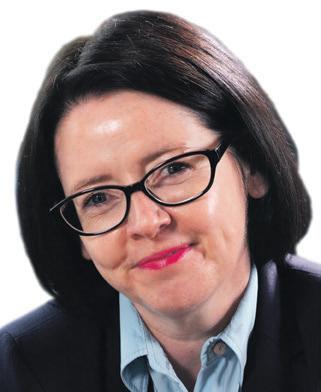
My eyes filled with water but I willed the tears back. I pinned the number card to my chest and pushed out my chin as I waited for the opening beats of the music. One, two, three, four.
BEING POOR: A SHORT PROLOGUE
The incident at the dance competition is the first memory I can recall of when I felt the sting of other people’s pity and when I think I realised, on a visceral level, that being from a poor background came with a stigma attached to it. Being poor or ‘on welfare’ was a source of shame.
Over the years there would be many other incidents that sharpened my understanding of the intersection of poverty, pity and shame. Like realising our first home, the one I lived in until we were re-housed when I was seven into new, public housing, was nothing short of a slum. Our first house had just two tiny bedrooms for eight people, and was perpetually damp. Rats were so commonplace they may as well have been members of the family. (A shovel was kept handy in the living room for when one appeared.) There was no bathroom, indoor toilet or central heating and the kitchen was a makeshift scullery with a plastic corrugated roof. Having a fridge or washing machine was unimaginable. My mum kept it immaculately clean and looking as nice as possible, but there’s only so much make-up you can put on a pig.
As I got a bit older and my dad became unemployed there was the realisation that claiming the ‘dole’ (unemployment benefits), as my father had to do for long periods of time, was a source of humiliation, even within a community where many people were in the same situation. And there was the knowledge that relying on state assistance to get by was not something that everyone had to face and was seen by some people as a sign of parental failure. There was the awareness too that while the food in our cupboards mostly met our daily needs (we had to borrow from neighbours when things got really tight) and that even though we had occasional treats (often paid for by going into debt with loan sharks), this was not how everyone lived.
West Belfast, which was also one of the main flashpoints during Northern Ireland’s sectarian conflict in the 1970s and 1980s, was among the most deprived areas in the whole of Western Europe—but even if I had known this, I doubt it would have made my younger self feel any better about how much we had to struggle or how much shame there was at not being able to afford what others could.
I’d seen enough TV to know that there were people who were well off or rich. I knew my teachers were better off. I’d just never really been anywhere near a wealthier part of town and interacted with people who lived there. I’d never met anybody from that background in any intimate way. Like most poorer families—and
this is true today in Britain and America—we lived our lives in the poorer parts of town. We didn’t have middle-class friends. But when I first began to understand that we were looked down upon or pitied by many more financially fortunate people, the undercurrent of shame stayed with me for a long time.
Anyone who has grown up poor will have similar stories to tell: those small or large experiences or encounters that force you to register that your family is not just lacking in material things (as hard as that may be) but that as a kid you are set apart from other children. Maybe it’s your first day at a new school when you look around and realise that the kids whose parents have jobs, or better-paid ones than yours do, have pocket money or better clothes. Maybe a teacher tells you that the best you can hope for in life is a minimum-wage job at a fast-food chain and not to set your sights too high. Perhaps it’s watching a parent struggle to make sure there’s enough food on the table or warmth in the room when you have a new friend round whose family don’t seem to have the same financial hardships.
Or maybe you don’t ever ask friends to come to your house because there’s nothing in the cupboard to offer them. It could be that you overheard a conversation where someone commented on how scruffy you and your siblings look or criticised your parents for failing to take ‘proper’ care of you. If you’re female, you may have experienced the humiliation and discomfort during adolescence of not being able to afford sanitary products and having to improvise while spending the day fretting that it might not work.
If you didn’t grow up in poverty, these sorts of indignities most likely will not have affected you, and you will be unaware of the enduring impact they can have on a young person. You might never have thought much about the reasons people end up trapped by poverty or the dearth of opportunities that keep them there. If you have never lived on the breadline, it’s probably difficult to grasp that for many people, no matter how hard they work at their minimum-wage precarious jobs, they just never have enough to make the rent, eat nutritious food every day, or buy a much-needed new pair of shoes for their kids. You might not have thought about what it feels like to have no choice but to swallow your pride and go to a food bank to stock up on essentials because you don’t qualify for state assistance. Yet, every single day, people all over the US and the UK live with the gross injustice that is being poor and with the humiliation of being blamed for circumstances beyond their control.
It doesn’t have to be this way. It really doesn’t.
As someone who directly benefited from the structural redistribution in the UK that followed the Second World War including the founding of the Welfare State, affordable council housing, the National Health Service and free school meals, I know that where there is a will, we can provide a springboard to better things for the poorest among us. A fairer, more equitable society where we don’t blame and shame the poor is not beyond the reach of wealthy nations like Britain and America. It’s an honourable, gettable goal.
For a long time in the US and the UK, two of the wealthiest yet most unequal nations on earth, the primary story told about poverty has been that it is the fault of the individual and is the result of personal flaws or ‘bad life decisions’ rather than policy choices or economic inequality. If only people worked harder, if only they ‘pulled themselves up by their bootstraps’ or got ‘on their bikes’ as the one-time Tory Secretary for Education Norman Tebbit once declared, they too could find a job.
This book is about a ‘shame game’ that is being played out against millions of the poorest people in Britain and America. It tells the story of how a pervasive toxic narrative that shames and blames the poor has secured a stranglehold on our collective understanding of poverty. Drawing on interviews with people who have first-hand experience of poverty in both countries this book documents how a powerful story propagated by powerful people plays a pivotal role in sustaining and justifying high levels of poverty and inequality by repeatedly misrepresenting, and stigmatising, people who are poor. And this book looks at how we can alter the way we talk about and understand poverty in order to shift perceptions and to work towards building a consensus on how to tackle poverty and improve people’s lives.
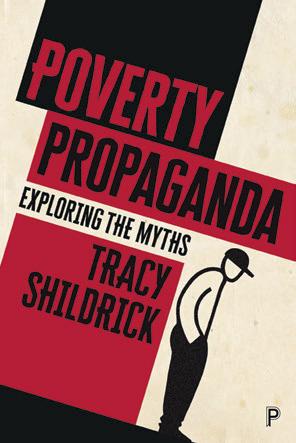
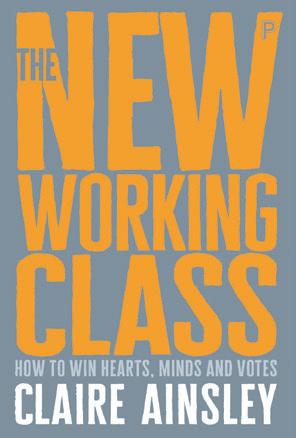
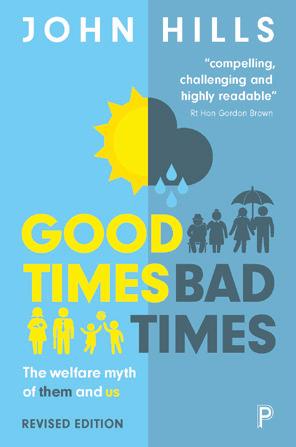
So, stand up, stand proud and don’t play their game any more. Read this book to educate yourself. Read this book to hear from the people who are being shamed, whose
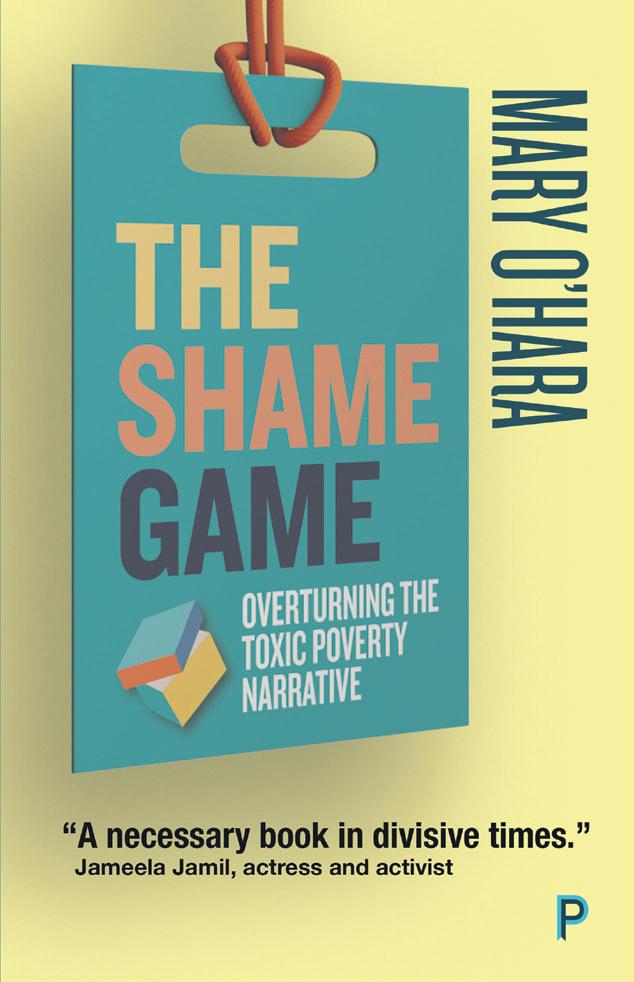
POVERTY / SOCIAL JUSTICE | ISSUE 6 | PAGE 8
This edited extract is taken from pages 17–20 and 1–2 … continued in the book
Overturning the Toxic Poverty Narrative Policy Press, Bristol, 232pp, Softback, 9781447349266, 138mm x 216mm, 27 February 2020, RRP £12.99
Subscribe to Booklaunch www.booklaunch.london/subscribe
the same publisher
From
Save £1.56 Our price £11.43 inc. free UK delivery To buy this book, visit www.booklaunch.london/sales or point your smartphone here
Polish Jewry was once the beating heart of European Jewry. With a population of 3.3 million on the eve of the Second World War, Poland’s Jews were renowned for their varied and multi-layered religious, cultural and political life. These Polonised Jews played a major role in fashioning the country’s modern commercial, intellectual and creative industries. Indeed Polish history is difficult to grasp without acknowledging the Jewish contribution.
By the end of the war three million Polish Jews had perished in the Holocaust. For the survivors, their former world disappeared beneath a landscape of apocalyptic devastation. Ongoing and often murderous anti-semitic incidents, combined with an increasingly repressive Communist regime, convinced many survivors that their future lay outside Poland. Waves of post-war emigration throughout the 1940s and 1950s to Israel and western countries significantly reduced the Jewish population.
In 1968, the Communist government unleashed an anti-semitic campaign which stripped most of those who were left of their jobs and prominent positions, forcing many thousands (often Communist Party members) into exile.
By the 1970s Poland appeared, to the outside world, a country empty of Jews. Polish behaviour gave the impression the country was relentlessly anti-semitic. Jews in the Diaspora concluded that Jewish life in Poland would never recover; their main interest was therefore confined to the history of the Holocaust and the Nazi death camps.


I was one of them. On the road to north-eastern Poland, to my mother’s shtetl, I couldn’t escape the realisation that the region had once been thickly populated with bustling shtetls, but began to sense that Poland was not as empty of Jews as I had thought. Over the course of my visit I heard many anecdotes about growing numbers of Poles discovering and exploring their Jewish ancestry. Soon the idea gripped me that this story needed to be told, in the words of the individuals themselves.
From the outset it was clear my book would be designed for a general audience. The specialised field of Polish-Jewish studies was flourishing and I had no intention of competing. Instead I wanted the profiles to be
Opening the Drawer: The Hidden Identities of Polish Jews Barry Cohen
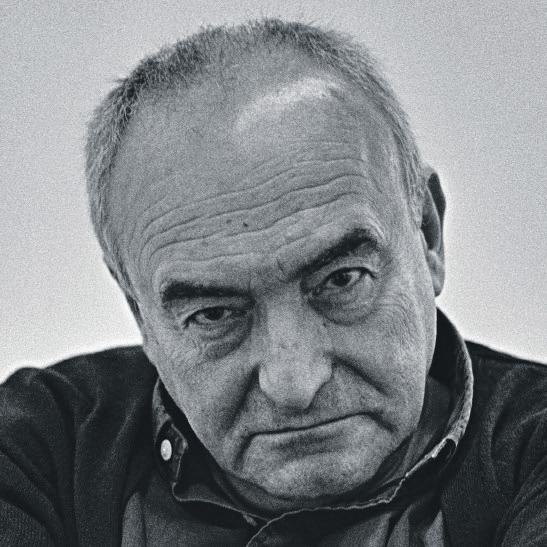
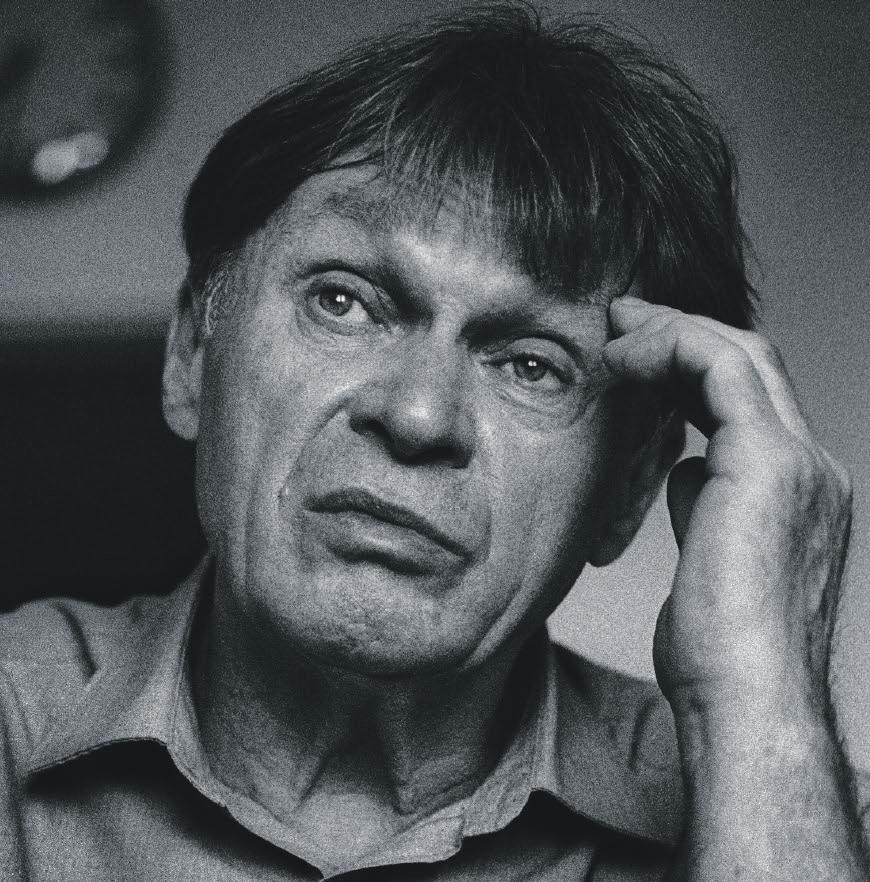
 photographs by Witold Krassowski
photographs by Witold Krassowski

accessible: to involve members of three generations who were prepared to recount their experiences, the impact of the discovery on their relationships and lives.

Each generation grew up in a specific period of Polish history. Holocaust survivors usually emerged from the war as orphans, lacking the structure and psychological support of a family. The creation of the Association of Children of the Holocaust in 1993 proved seminal. Many members of the association were traumatised by the wartime experience of being separated from their parents, and hidden by Catholic families or religious institutions.

The organisation provided a crucial sense of belonging and, in many ways, served as a therapeutic forum. At the same time, some members continue to maintain their Catholicism as a key component of their identity, leading the Polish writer, Konstanty Gebert, to wryly observe: ‘The Association of Children of the Holocaust is unique. It’s the only Jewish organisation in which most members are Catholics.’
A good deal of the credit for the revival of Jewish life can be attributed to members of the second generation. Many are the offspring of Communist Party or leftist parents deeply committed, in the post-war period, to building a socialist society. They were also militantly internationalist, which tended to exclude any form of Jewish consciousness. This was reinforced by pressure within the Communist regime for Jewish party members to polonise their names and outward identities. ‘My father decided to pass as a Pole because it would be easier to persuade people about the merits of Communism if he promoted the ideology as a Pole and not as a Jew’, recalls Jarosław Górnicki.
Many second-generation Jews also experienced a traumatic period during the anti-semitic campaign of 1968. As the purge spread, individuals were suddenly informed of their Jewish origins for the first time in their lives. This resulted in the loss of jobs, government positions and university places, even leading up to the revocation of citizenship and, ultimately, exile. Those who managed to remain in Poland felt compelled to adopt an underground identity.



After the horrors of the Holocaust and the oppression of the Communist regime, the third generation can be regarded as comparatively fortunate. Emerging into a civil society that is also a member of the European Union, this
Three generations of Poles either buried their Jewish origins or only discovered them by chance. Drawing on interviews with Holocaust survivors, the post-war second generation and the post-Communist third generation, Barry Cohen’s research unlocks memorable accounts of how long-hidden family histories and secrets came to light. They include sometimes emotional stories of ordinary people, including a Catholic priest and a former Jewhating football hooligan, who grew up thinking of themselves very differently from how they have come to regard themselves now
Barry Cohen is a Canadian writer and journalist based in London who has worked as an editor for many publications, including as foreign editor of the New Statesman. He has also contributed to many other British, US and European magazines and newspapers, mostly focusing on foreign affairs and international business and financial issues. He has won several financial journalism awards and holds degrees in political science and international relations from universities in Canada, Britain and Italy
POST-HOLOCAUST STUDIES | ISSUE 6 | PAGE 9
This edited extract is taken from the Introduction
… continued in the book
Vallentine Mitchell, London and Portland OR, 323pp, Softback, 9781910383810, 155mm x 235mm, 53 b/w portraits, 2018, RRP: £17.50
Subscribe to Booklaunch www.booklaunch.london/subscribe Save £1.51 Our price £15.99 inc. free UK delivery To buy this book, visit www.booklaunch.london/sales or point your smartphone here
The Literary Politics of Scottish Devolution: Voice, Class, Nation Scott Hames
The Canongate Wall forms the northern edge of the Scottish Parliament building, at the very foot of Edinburgh’s Royal Mile. Embedded in the wall are 26 decorative panels of Scottish stone with inscriptions that gather a kind of pebbledash pantheon of modern Scottish literature, including Robert Burns (twice), Walter Scott, Robert Louis Stevenson, Hugh MacDiarmid (thrice), Hamish Henderson, Norman MacCaig, Edwin Morgan and Alasdair Gray. The first version of Gray’s stone—bearing the unofficial credo of devolutionary nationalism, ‘work as if you were living in the early days of a better nation’— misspelled his first name, and had to be re-made. But the ‘vernacular’, hand-crafted particularities of the wall make errors of this kind seem forgivably natural.
No element of the design places democracy on a solemn neoclassical pedestal, or encourages hushed reverence for governing power; indeed, the human faults and frailties of parliamentarians are a running theme. In pride of place, the left-most stone quotes Mrs Howden from Scott’s Heart of Midlothian: ‘When we had a king, and a chancellor, and parliament-men o’ our ain, we could aye peeble them wi’ stanes when they werena gude bairns—But naebody’s nails can reach the length o’Lunnon.’ A firm reminder, in demotic Scots, that the parliament is accountable to the local voices and dissenting energies of its immediate lifeworld. Far from monumentalising their power, the wall reminds MSPs of the socially limited character of their role.
This patchwork of stone and script—including several Gaelic inscriptions, works by English authors, and religious texts—might be held to embody the ‘diversity of voices’ the building exists to represent, and yet it would be impossible to read the wall as democratically reflecting the nation. Of the 26 panels, 20 feature quotations by men. There are four authorless proverbs and songs, a psalm, and just one stone featuring the name of a woman, the songwriter and communist mill-worker Mary Brooksbank. All the named authors are white.
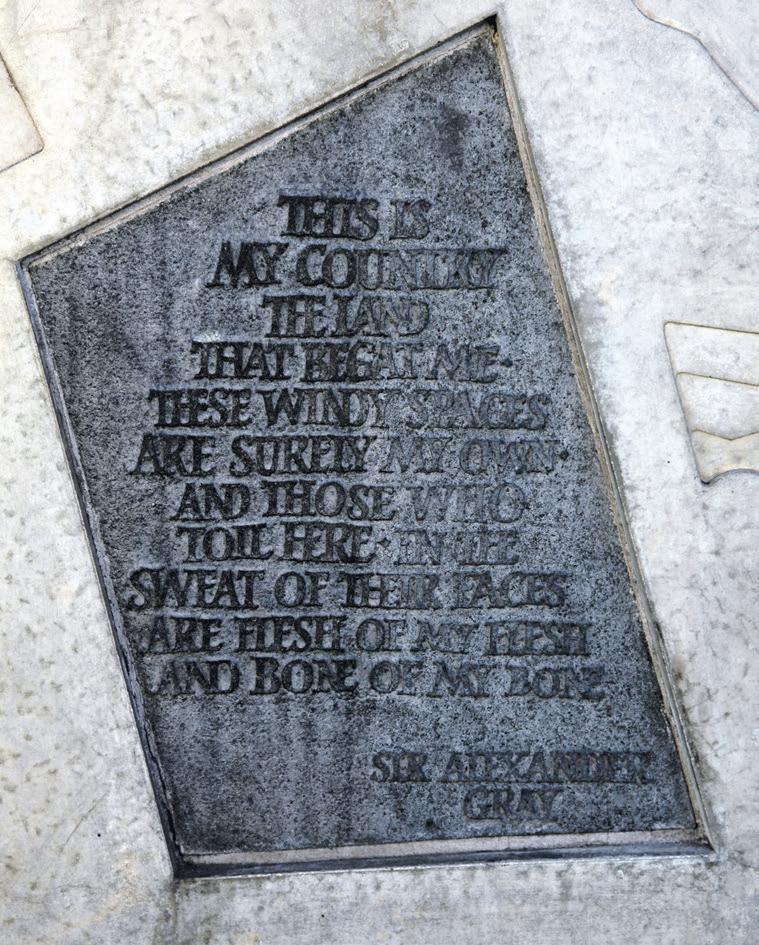


If we pursue this thought, and think critically about the imagery of national representation, the Canongate façade begins to take on a rather different countenance. Its oblique planes and irregular surfaces might even begin to suggest handholds and footholds: potential means of scaling the outer skin of Holyrood, perhaps to seek another point of entry, from an angle discouraged by the confident architecture. That thought is close to the impulse behind this book.
LITERATURE AND/AS POLITICS
A few weeks prior to the 2014 referendum on Scottish independence, Colin Kidd argued that ‘Scottish literature is for the SNP not a frill, but a matter of central concern’:
For [First Minister Alex] Salmond, literature is a kind of QED: Anglo-Scottish differences in diction, lilt, sensitivity and worldview prove the grand truths of nationalism. He has argued, plausibly enough, that it is impossible to mistake the differences between a Scottish novel and an English novel. Novels, he believes, reveal fundamental differences in the values and ethos of Scots and English.
In the summer of 2014 one did hear such arguments, among many others. And yet few prominent Scottish writers who supported the campaign for independence would accept this firm equation between literary Scottishness and the demand for statehood, as though one predicated the other. The modern SNP is noted for its ‘acultural’ nationalism, placing far greater emphasis— particularly under Salmond’s leadership—on economic powers, and confining to Burns Night its appetite for literary inspiration. Indeed, Cairns Craig notes with regret ‘that there is probably no nationalist party in the world that has been less focused on mobilising culture as part of its political strategy than the SNP’, despite Scotland’s bounteous possession of ‘cultural wealth’ ripe for the purpose.
But the minimal presence of programmatic literary patriotism is only one part of the story. There really has been a complex and pervasive intermingling of Scottish literature and politics over the past few decades, with far-reaching consequences in both domains: for how we read (and over-read) the politics of Scottish writing, and for how we conceive the place of cultural and literary ‘identity’ within the project of Scottish nationalism. That is, broadly, what this book is about. In sketching its pur-
view, we must begin by amending Kidd’s history: it is precisely in the absence of an official literary nationalism that Scottish writers and artists have claimed—and been burdened with—special ‘representative’ clout.
This is particularly the case in the post-1979 period on which this study is mainly focused, but is also evident in earlier debates. Jack Brand’s 1978 study of the National Movement in Scotland found, in Christopher Harvie’s paraphrase, ‘that although literature may have mobilized members of the party elite—and was interesting for this reason—the intellectual trend in Scotland had really been away from nationalism towards socialism. Paradoxically, Brand argued, this aided SNP organization. Political mobilization did not conflict with an existing scale of literary values—or with literary nationalists throwing their weight around’.
This too was only half true: there were plenty of bellicose literary nationalists in the 1970s, many spoiling for a fight with Scotland’s ‘deracinated’ political class, but they kept a wary distance from the SNP. For some, this was indeed an expression of socialist distrust of ‘bourgeois nationalism’; for others, the SNP weren’t nationalist enough (or indeed nationalist at all). But such debates occurred at the fringe of Scottish politics. They only gained purchase in the political mainstream following the failed referendum on a Scottish Assembly held in March 1979. While the SNP vote crashed following the 40 per cent rule debacle, Harvie continues, ‘the 1980s saw a nationalist stance become general among the Scottish intelligentsia. […] The orthodoxy now is that the revival in painting, film and the novel, in poetry and drama—staged and televised—kept a “national movement” in being.’
This ‘orthodoxy’ has an extensive history of its own Harvie was writing in 1991, at the height of its influence and plausibility and is less a neutral historical description of how things transpired than a mobilising narrative constructed within the diffuse, campaign-like process and milieu it describes. As Jonathan Hearn observes, ‘members of the intelligentsia have an interest in treating Scotland as an object of concern, study and discussion’. The political utterances of literary figures such as William McIlvanney, James Kelman, Irvine Welsh and Alasdair Gray are thus located by Hearn within a broader ‘network of intellectuals, academics, artists, writers, journalists and media figures through whom the ideas of the [self-government] movement were constantly being articulated and re-articulated’ in the 1980s and 90s. The ‘committed’ (and preferably outspoken) Scottish writer was a key and prominent contributor to the pro-devolution social consensus which so strongly conditioned the critical reception of their art.
INTELLECTUALS AND CONSTITUTIONAL POLITICS
This presents a certain dilemma, for literary critic and political historian alike. Few of the key scholars and commentators cited in this study have remained aloof from the events and investments at issue, but (once acknowledged) this does not diminish the interest of their reflections and analysis. On the contrary: post-war Scotland is an enormously rich and well-documented case of what Michael D. Kennedy and Ronald Grigor Suny call the ‘mutual articulation of national discourses and intellectuals’. As we shall see, a whole constellation of writers, journalists, artists and thinkers embraced their role ‘as constitutive of the nation itself’ during the period this book examines, with several overtly committing themselves to (re-)establishing ‘the very language and universe of meaning in which nations become possible’.
The majority of these figures remain active in Scottish cultural debate, so it is with a degree of unease that I take up a critical stance on their work of several decades—work which I respect, whose political motivation I largely share, and the fruits of which have undoubtedly benefitted me personally. Nonetheless, there must be a space for critique ‘within-and-against’ nationalist intellectualism, if any of its liberating and clarifying energies are to be realised within the scholarly fields it helped to consolidate.
Kennedy and Suny observe that ‘intellectuals face a double risk when enveloped by the nation. On one hand, as patriots, they lose their credentials as critical or independent. On the other hand, as critical intellectuals questioning the very “authenticity” of the nation, they are either ignored, marginalized, or cast out altogether’.
Analysis of their role in the discursive reproduction of nationhood ‘is likely to draw hostility from “true” nationalists’, as many historic examples attest, but I am optimistic this study will be received in a spirit which lives up to the finer moments in the history it traces. To

This edited extract is taken from the Preface and Introduction
SCOTTISH LITERATURE / POLITICS | ISSUE 6 | PAGE 10
be clear from the outset, this study is not an exercise in debunking Harvie’s ‘orthodoxy’ or exposing the self-interest of its proponents. It is a critical exploration of what this story—the story of ‘cultural devolution’ prior to the 1998 Scotland Act—means to us in devolved Scotland two decades later: as an historical account of how and why the Scottish Parliament came to be; as a paradigm guiding critical practice in Scottish literary studies (and cultural studies more generally); and as a political narrative presenting the meaning of devolution in culturally expressive terms.

But what is ‘cultural devolution’? As a handy starting-point, we might take the writer and activist Kevin Williamson’s forthright claim that ‘Scotland’s musicians, singers, poets, writers and artists had paved the way for the re-opening of the Scottish Parliament. They had reasserted their sense of Scottish identity, and their democratic aspirations, and from 1999 Scots had a political structure which could begin to convey the democratic wishes of the Scottish people’.
I will often refer to this story as ‘The Dream’: a story of cultural vanguardism in which writers and artists play the starring role in the recuperation of national identity, cultural confidence and democratic agency. It contrasts sharply with the less inspiring story I will call ‘The Grind’: the longer, thinner political history of devolution as a shrewd and sometimes grubby saga of electoral expediency, characterised less by stirring visions of democratic rebirth than ploys of cynical circumspection (such as a Royal Commission on the Constitution appointed to do, or rather to recommend, as little as politically possible).
Tellingly, it is the establishment of Harold Wilson’s Royal Commission in 1969—not any electoral breakthrough for Scottish or Welsh nationalists, or any of the constitutional novelties of the 1990s—which is commemorated in the new stained-glass tribute to UK devolution in the Palace of Westminster. This book explores the difference and interaction of these parallel stories—one determinedly Scottish, the other inescapably British— with an interest in tracing moments where one seems to illuminate, puncture, or redeem the other. My aim is to critically examine the conflation of these narratives and processes, and the consequences which follow for Scottish literary history and criticism; not to throw stones at what the Canongate Wall seems to signify, but to examine the logic of its construction.
THE DREAM AND THE GRIND
A few weeks before the 2014 referendum on Scottish independence, the novelist Alan Warner predicted that ‘a No vote will create a profound and strange schism between the voters of Scotland and its literature; a new convulsion. It will be the death knell for the whole Scottish literature “project”—a crushing denial of an identity that writers have been meticulously accumulating, trying to maintain and refine.’

In the years following the No result, a number of less circumspect writers followed Warner’s logic through to its conclusion. In his poem digesting the outcome, ‘Naw’, Stuart A. Paterson takes the result as a self-cancellation of national honour, paradoxically ejecting the voting majority from any rightful claim to be ‘Scotland’s fowk’:

The hail world’s gan baith quair & peerie, Heelster-gowdie, tapsalteerie.
Ah cannae jist jalousie at a Hoo Scotland’s fowk have votit Naw.
[...]
Yon whae wid chant the tribal sangs
O pride o whaur they maist belong Maun wheesht & sing nae sange at a— They have nae richt. They votit Naw.
But who is ‘they’ in this bleak conclusion, and how is it related to the Scotland on whose behalf the poet sings? In its performance of vernacular presence and vitality, the poem evokes an earlier condition of national health and pride, and a sense of ‘we-ness’ (the poem argues) formally disavowed in 2014, but also anchored ‘beyond’ the fickle tides of public opinion. These quair unravellings can easily be traced back to contradictions within the paradigm of ‘cultural devolution’ which emerged after 1979, which has powerfully shaped how subsequent Scottish writers conceive (and defend) their role. But we should not be too hasty in busting the vanities of a supposed literary vanguard, whose special status as ‘voices’ and ‘representatives’ of Scotland was either can- celled by direct plebiscite in 2014, or revealed to rest on a ‘higher’ conception of
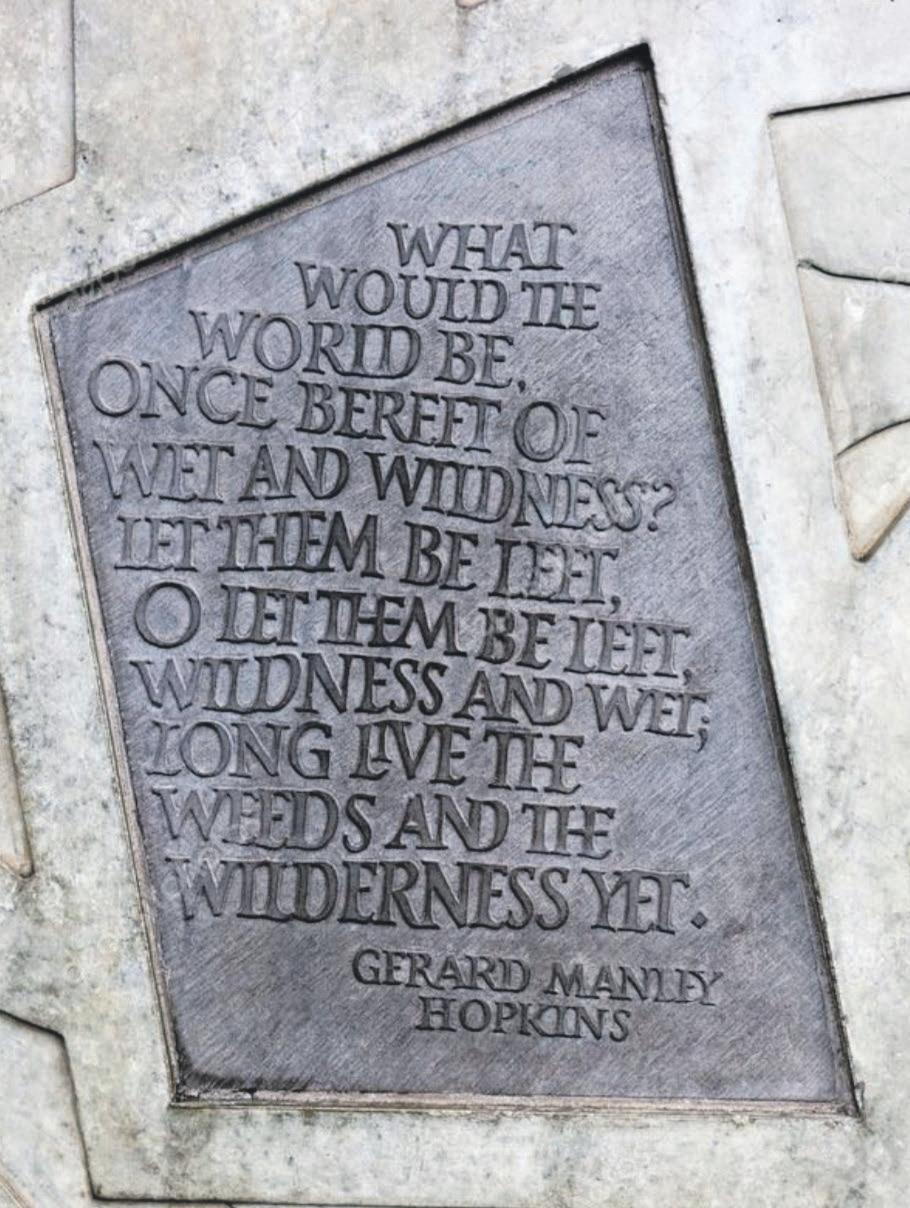
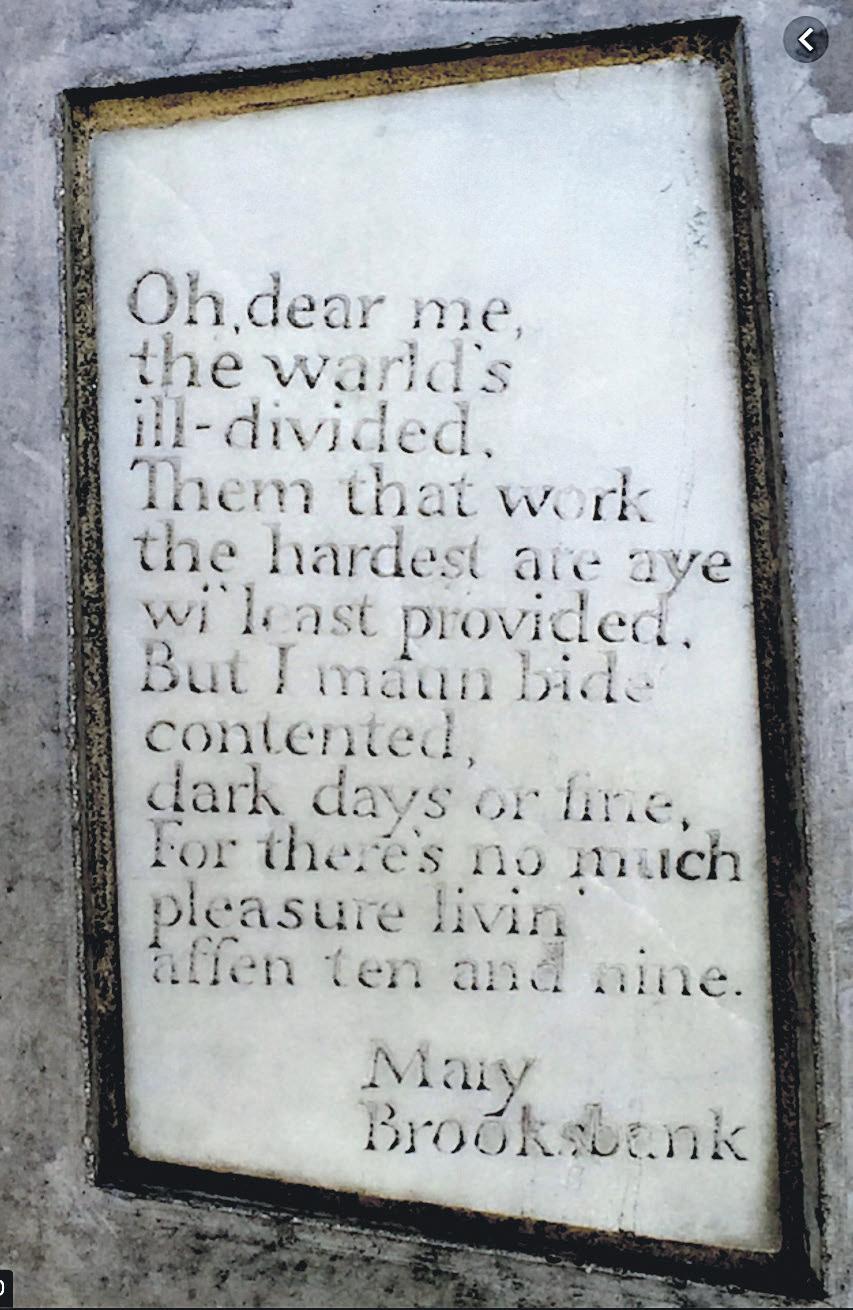
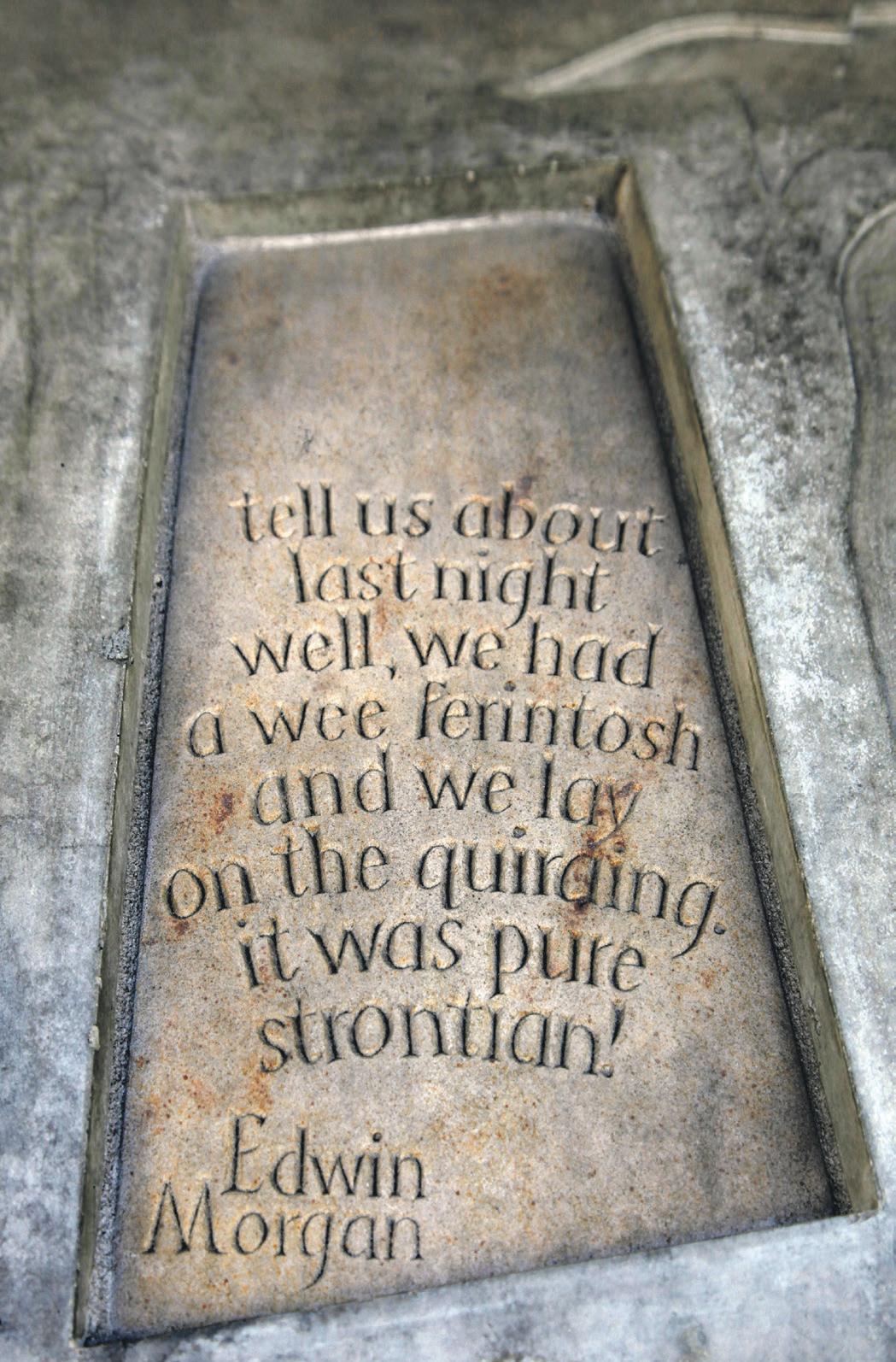

How have writers and intellectuals shaped constitutional change in Scotland? Tracing the “dream” of cultural empowerment and the “grind” of electoral strategy, Scott Hames sets the influence of magazines such as Scottish International, Radical Scotland, Cencrastus and Edinburgh Review alongside the fiction of William McIlvanney, James Kelman, Irvine Welsh, A. L. Kennedy and James Robertson to provide a radically altered picture of Scottish devolution
Edinburgh University Press, Edinburgh, 352pp, Softback, 9781474418140, 138mm x 216mm, November 2019, RRP £24.99
Scott Hames is Lecturer in Scottish Literature at the University of Stirling, where he is the director of the MLitt in Scottish Literature. He writes widely on Scottish writing and cultural politics, with a focus on questions of language and “voice”, and co-founded the International Journal of Scottish Literature
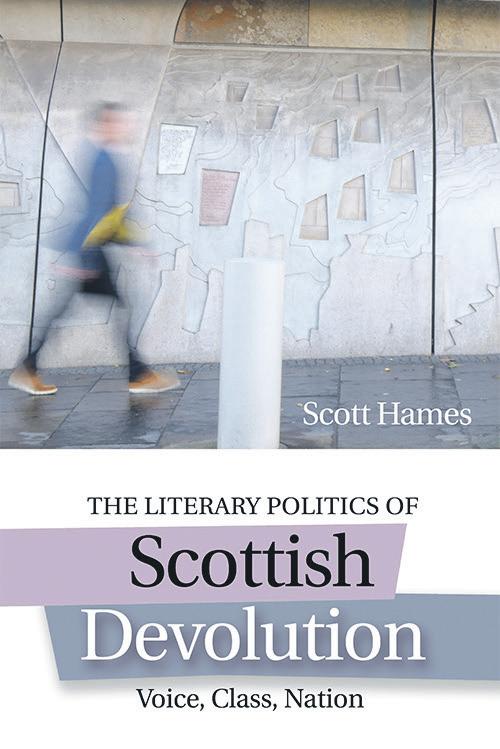
Save £4.00
Our price £20.99 inc. free UK delivery
To buy this book, visit www.booklaunch.london/sales or point your smartphone here
From the same publisher
… continued in the book
SCOTTISH LITERATURE / POLITICS | ISSUE 6 | PAGE 11
Photographs copyright © The Scottish Parliamentary Corporate Body
A Very Dangerous Locality Rob Liddiard and David Sims
Before the war, the coastal strip from Lowestoft to Felixstowe was felt to be exceptionally vulnerable to invasion and more military defences were built here than anywhere else in England. Thanks to post-war conservation, much of this has survived, from pillboxes and trench systems to gunnery ranges and mock German field positions. These relics of war now add an extra layer of archaeological interest to what had always been a distinct landscape, never studied in detail until now

Save £1.77
Our price £17.22
inc. free UK delivery
To buy this book, visit www.booklaunch.london/sales or point your smartphone here
The Sandlings landscape is quintessential East Anglia. It is a place of long, gentle lines with a vast open sky. Much of its distinctive character derives from the juxtaposition of the coastline with heath and marsh, which in places blend almost seamlessly with the beaches to make, in extent if not always in detail, a landscape unique in the British Isles. The idiosyncrasies of the Sandlings first began to be appreciated in the late nineteenth century, with the growth of the tourist industry. It was at this time that the modern perception of the landscape took shape. From the 1880s Walberswick became associated with the circle of Impressionists led by Philip Wilson Steer, with compositions such as The Beach at Walberswick widely accepted as some of the most authentic works of Impressionism in British art. Other notable figures from the arts whose work was influenced by the peculiarities of the Sandlings include Charles Rennie Mackintosh, Benjamin Britten and George Orwell. During the 1930s numerous paintings depicted an idyllic landscape of villages, churches and wide open spaces, which represented a regional take on the interwar sensibility that English national identity was bound up with notions of the rural landscape. The imagined qualities of the Sandlings can also be seen in the artwork commissioned as part of the ‘Recording Britain’ programme, in which the nation’s architectural heritage and historic environment was recorded by artists in a bid to keep a record of those places felt to be vulnerable to German bombing. Among the Suffolk material Orford, Sudbourne, Bawdsey and Woodbridge all feature prominently, with the dominant image one of a timeless, sleepy region largely untouched by modernity.
PERCEIVING THE MILITARY LANDSCAPE

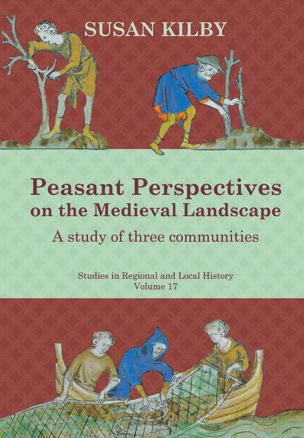
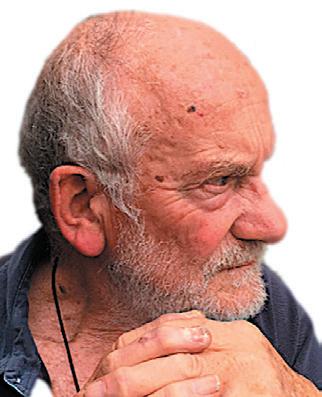
The extent and nature of the physical changes brought to this landscape by the war struck both residents and outsiders alike. The description of the area between Ipswich and Felixstowe by the American serviceman Robert Arbib, who wrote an account of his time in England almost immediately after the end of the war, stands for many:
the country was a fortress—and these coastal counties were a Siegfried Line. At every turn of the road were concrete pillboxes. The railway lines and aerodromes were lined and ringed with mountainous piles of rusting barbed wire; at every narrow intersection and in the village streets and at bends in the road were big cylinders of concrete, pyramidal blocks of concrete, V shaped stacks of iron rails ready to be formed into tank obstacles. Every flat field had its poles and wires strung out to snare and wreck gliders and airborne troop-carriers.
The numerous oddities of the defence landscape and the incongruence of the individual works with their surroundings are a consistent feature of wartime writ-
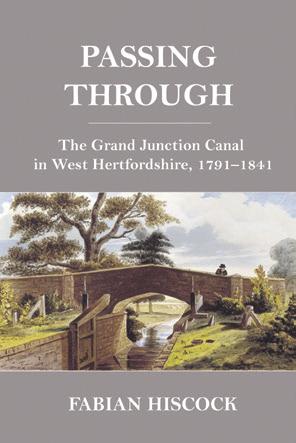
ing and often the photographic record. For the civilian inhabitants of the Sandlings, the visual transformation of familiar backdrops was so profound that some were moved to record their thoughts and experiences in writing and art. In ‘Walberswick, Then and Now’, written by two long-term village residents c.1944, it was the physical changes in the countryside that drew comment:
The bridges have all disappeared, The sluice is turned about, To keep the water on the marsh Which always kept it out.
The beach is barricaded now,
The lanes are mud and mire, The footpaths and the lovely walks

Are strewn with barbéd wire … O Walberswick, O don’t despair, good times will come again
When war is done and peace declared, prosperity will reign.
Similar sentiments can be seen in wartime works of art. While pre-war landscapes of the Suffolk coast tended to focus on subtle shorelines and pastoral scenes, wartime compositions were more avant-garde; oils such as Prunella Clough’s Harbour Works (1942), Shoreline and War Defences (1941–42) and Closed Beach (1945) exhibit more Cubist characteristics, with vivid depictions of scaffolding, concrete and wire. Here the surrealist concern with surprise and unusual juxtapositions were tailor-made for wartime defences, as their form contrasted so dramatically with the pre-war ideal.
In other ways, physical defence works did not represent an altogether ‘alien’ imposition. The idea that the Sandlings was a pre-war idyll may have existed in the mind, but the placing of geometric concrete structures along parts of the coast had been seen prior to the outbreak of war. At Thorpeness—a rare example of a deliberately planned seaside resort—the village was developed by the Ogilve family during the 1920s, when it became an exclusive retreat. The character of the village was set by timber-framed cottages and an element of the fantastic was provided by the creation of idiosyncratic buildings such as the disguised water tower known as ‘The House in the Clouds’. This facade of a fantasy playground hid an altogether more mundane fabric. Behind the timber framing the shells of the individual buildings were made of brick and concrete. The property boundaries and garden walls were also of concrete, but here they were left bare, with the blocks themselves arranged in decorative forms. Altogether more elaborate, however, were the golf course and the entrance to the tennis courts, the latter comprising a concrete archway reminiscent of a classical portal. It is therefore not quite the case that the creation of the wartime landscape represented the imposition of unfamiliar forms onto the region, as modernity had already, albeit in a small way, reached the Sandlings.
The distribution of Second World War archaeological remains in the Sandlings is uneven. In part this is due to the fact that defences were not built uniformly everywhere but selective patterns of removal also left
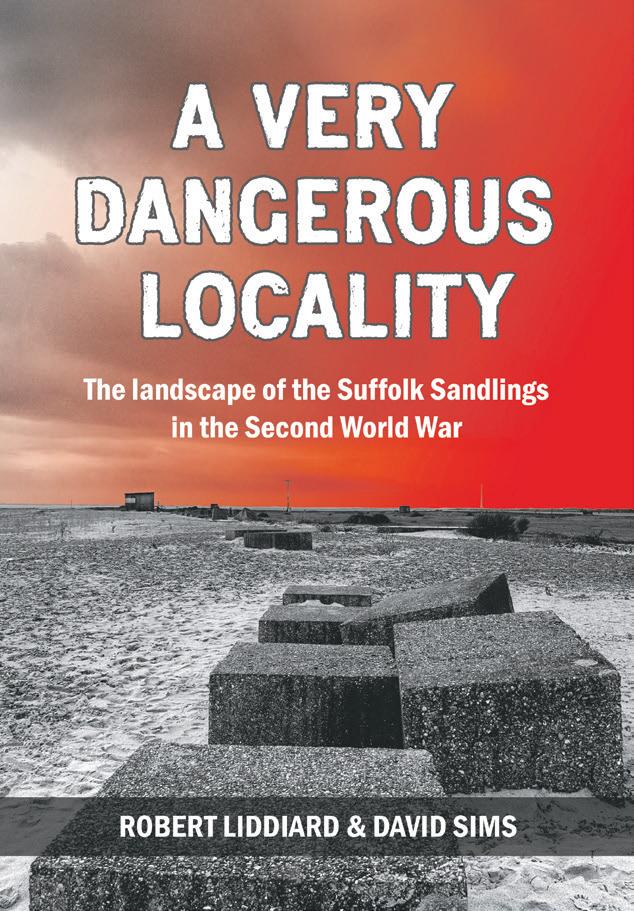
LOCAL HISTORY / MILITARY HISTORY | ISSUE 6 | PAGE 12
These edited extracts are taken from Chapter 8: The Civilian Landscape, and Chapter 9: From eyesore to archaeolo
The Landscape of the Suffolk Sandlings in the Second World War History series, University of Hertfordshire Press, Hatfield, 384pp, Softback, 9781912260089, 170mm x 244mm, Illustrated with maps, phots and art, 15 Nov 2018, RRP £18.99
Robert Liddiard is Professor of History at the University of East Anglia, specialising in the history of fortifications and landscape, ecclesiastical, secular and vernacular
Subscribe to Booklaunch www.booklaunch.london/subscribe From the same publisher
David Sims is an Honorary Research Fellow in History at the University of East Anglia
LEFT Blythburgh, heavy machine gun pillboxes (1940). RIGHT Closed Beach, oil on canvas (1945) © Estate of Prunella Clough. All Rights Reserved DACS 2019. FAR RIGHT Mine clearance on Felixstowe shore
their mark. The abandonment and removal of military works also took place during the war itself. Defence schemes were reconfigured on numerous occasions and so structures of all kinds were prone to abandonment as strategies changed. Orders for the destruction of redundant pillboxes can be found as early as 1941 and small numbers of pillboxes were removed only a year after their initial construction; in September 1941 the 9th Cameronians casually noted the deliberate destruction of a pillbox in their battalion area by Royal Engineers. A similar fate awaited field positions that by the middle of the war were considered unnecessary; at the end of 1941 unoccupied trenches that could provide cover for the enemy were to be blocked or covered with rabbit wire, while in June 1942 two companies of the 2nd Hertfordshires were engaged in the ‘dismantling of old positions and wire’. A
significant number of concrete defences were destroyed from 1943/44 as part of training and where redundant structures such as anti-landing ditches lay over potential arable land they began to be infilled from a similar time.
WE SHALL CLEAR IT OFF THE BEACHES
When it became evident that the war was going to end, government attention turned to how military remains were to be systematically removed. In 1944 it had been agreed that the Ministry of Works would be responsible for the derequisitioning of military property and the removal of the ‘Temporary Defence Works’, which included coastal defences and training infrastructure. The normal procedure was for the landowner to receive compensation for such works until they were cleared and the land ‘restored’ to its pre-war state, an arrangement that


continued until 1960, when all claims were extinguished. Where the effort to clear defences was not felt to be in the public interest a one-off compensation payment was made to the landowner that could be used to cover the costs of removal. There was, however, no legal requirement by the landowner to actually do so and, especially in remote or unobtrusive locations, structures were often left untouched and became private property.
In the case of seaside resorts in the south and east of England it was felt by government that it was in the national interest to expedite the process of clearance on municipal land and the War Office was prepared to meet bills for clearance directly. To that end, in November 1944 local authorities were encouraged to draw up schedules for the removal of works and submit quotes that could then be assessed and authorised by the War Office’s Lands Branch. Once the military had declared defence works redundant, a two-stage process followed: an initial phase of site clearance to make seafronts safe and accessible, then full ‘reinstatement’, which saw the full removal of defences and areas returned to their pre-war condition.
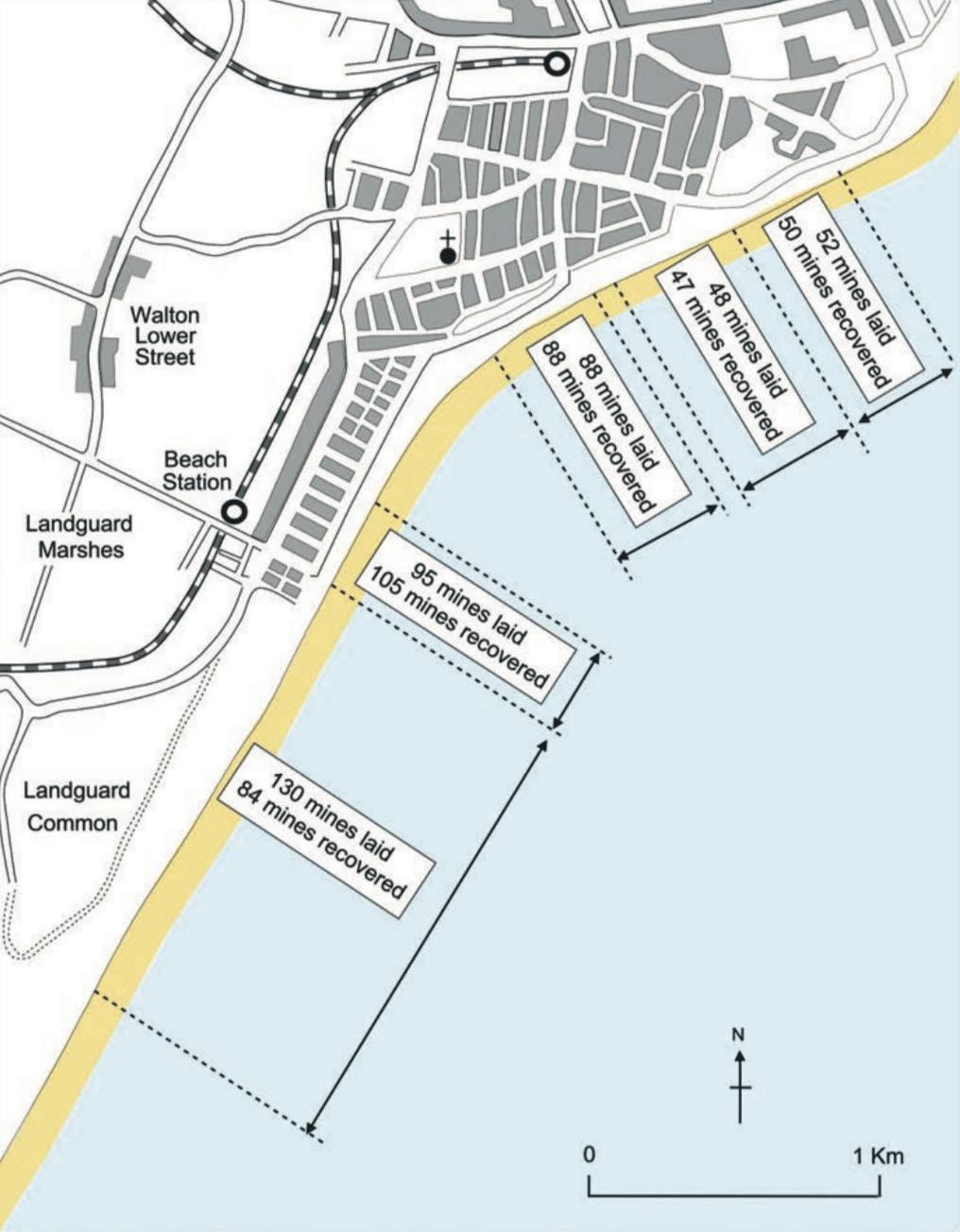
On the ground some work was already in hand during 1944, with army engineer parties clearing sections of beach for civilian access at Felixstowe, Aldeburgh and Thorpeness. The greatest impediment to the immediate opening of beaches for visitors was the presence of mines, and their clearance became the priority when the war was over. At Southwold sections of beach were declared clear throughout 1945, but parts remained mined into October the following year. At Felixstowe clearance began in earnest in March 1945 and involved the stripping of sand and shingle on beaches down to low water mark and to a depth of several feet. The stretch of coast from Felixstowe Ferry to Landguard Point was systematically cleared from north to south, a process that went on until the autumn. While clearance was ongoing the whole beach was closed and public access restricted to the area of the pier pavilion and the promenade, barbed wire being deliberately left in order to prevent civilians from approaching the work area. When whole beaches or discrete sections were declared clear of
… continued in the book



LOCAL HISTORY / MILITARY HISTORY | ISSUE 6 | PAGE 13
Energy, the Great Driver R. Gareth Wyn Jones
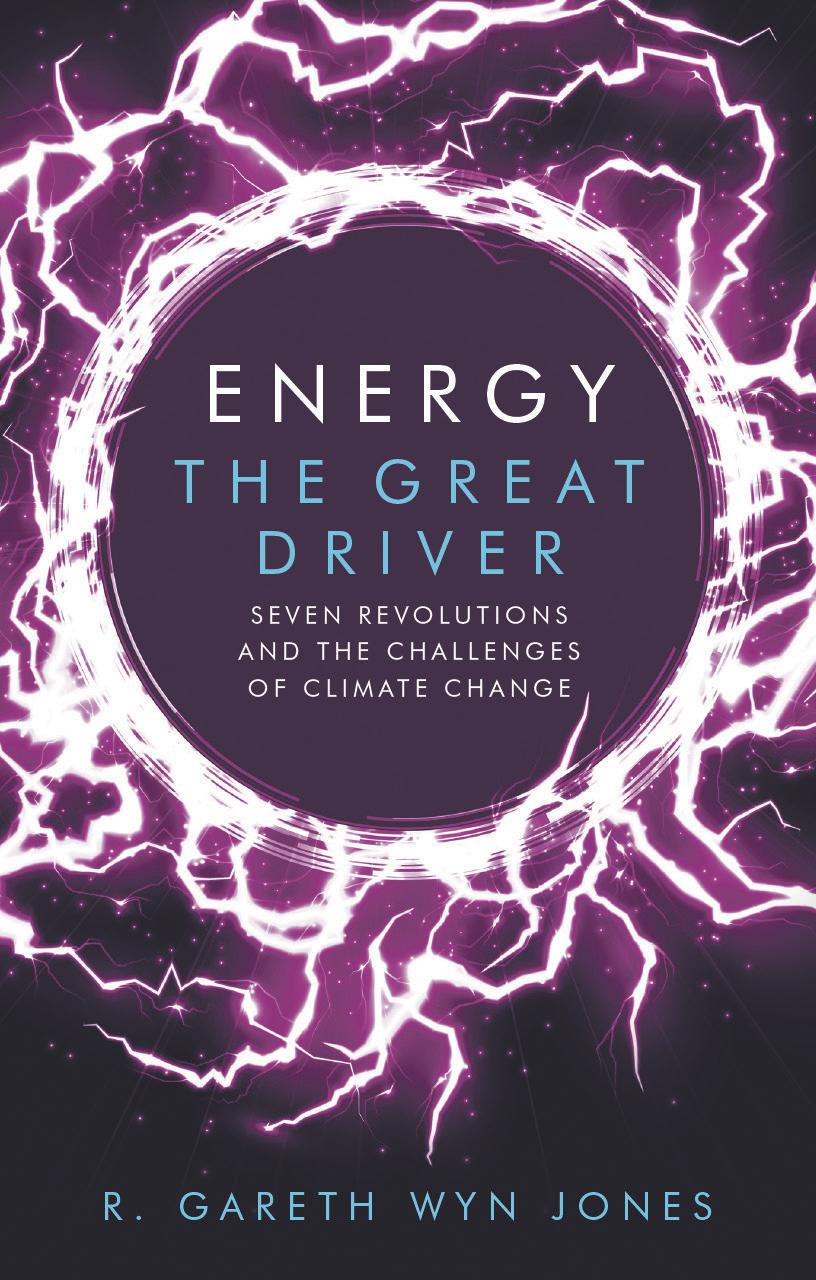
Seven
The ruins of Aleppo are a reminder of the fragility of peace and civilised behaviour. Lying in the Fertile Crescent, roughly equidistant between the Euphrates and the eastern Mediterranean, it has been a vibrant commercial and cultural centre for thousands of years. It was home to a bewildering number of ethnic groups and religious affiliations Sunni, Shia, Alawite, Ishmaeli and various Sufi sects, but also five bishops guiding their various Christian flocks, some speaking Aramaic, the language of Jesus. It has been ruled by Akkadians, Hittites, Persians, Armenians, Romans, Byzantines, Arab Sassanids and Umayyads, the Egyptian Mamluks and the French, amongst others.
Over the years I have had the good fortune to work in nearby Tel Hadya and to spend time in Aleppo. Although I knew the dangers of crossing the Baathist regime, the city appeared very safe, largely at ease with itself and to be gradually liberalising. Until the US interventions in Kuwait and Iraq, I saw few women wearing veils or headscarves and the Armenian restaurants in the old city were well patronised. Hopefully the city will rise from the calamity of the current civil war but the ruins should be a fearful warning of the thin line separating us from barbarity.
The war was started by internal divisions within Syria but has been aggravated by regional and foreign powers pursuing their own interests and vendettas through proxies. However, in the years leading to the civil war, Syria also suffered the worst drought in 400 years. I do not know how much this contributed to the uprising but the susceptibility of the livelihoods of many farmers to drought and their dependence on pumping water from retreating groundwater aquifers were plain to see.
The availability of energy enables work and stabilizes complexity, two factors that define how life has developed. In unpeeling logarithmic processes of change, R. Gareth Wyn Jones identifies six rapidly shortening energy revolutions from the energising of the first living cell to the exploitation of fossil fuel by industrialisation. A seventh revolution now challenges us: our own recognition of man-made climate change. Can we respond to it in time?
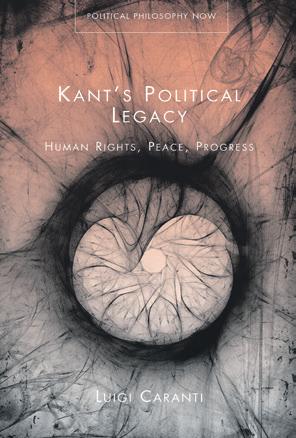
The war rumbles on, and the fear and despair that have gripped Syria are palpable. As climate change and global warming tighten their grip on populous countries, one must ask whether this is a harbinger of a more stormy and violent future. What will be the fate of drought-stricken Iran or parts of the Indian subcontinent where farmers are being compelled to cope not only with debts but with temperatures in the upper 40s and humidities so high that they override the human body’s temperature controls? Will some groups be protected and others not? Will communal violence erupt?
Well before James Lovelock and Lynn Margulis popularised the Gaia hypothesis in the late 1950s my old professor in Bangor, W. Charles Evans FRS, was preaching the essential continuity of the geospheres and biospheres. He conceived chemical threads leading from geology and geochemistry through soils and their abundant microbiology and the various atmospheric inputs, to higher plants and animals, be the latter humans or ruminants. Strongly influenced by his vision, my own work has led me to perceive further threads leading from cell biology to human societies from the subsistence farmers and herders of the Maloti mountains in Lesotho to the inhabitants of the bustling megapolises of Karachi and London.

Two chains stood out. The first was energy and the consequential ability to do and control work and to generate power. The second was homeostatic regulation. The former is of course fundamental to the climate change issue as a dangerous manifestation of the ageold relationship between energy flow and biology. The latter is, however, far less well known. I became aware of the concept after I started working on plant nutrition and stress adaptation. This led to an appreciation of the importance of homeostatic regulation in plants.
Energy enables work and power, which in turn lead to ordered complexity. New sources of energy or step changes in energy use have catalysed greater complexity, be it in pre-human biological systems and their structures or in human society and our constructs. In the case of cells and organisms, these ensure that core internal functions are maintained, if possible well maintained, and flourish in the face of external change and internal demands. Consequently, as biological and latterly human complexity has evolved, (homeostatic) stabilising systems must also evolve and develop to accommodate each new challenge. These simple concepts have profound implications for our modern dilemmas, including how we react to the multiple challenges of global warming and climate change and the Anthropocene era.
In this volume I outline the six major energy step changes that have come to define our planet’s bio-, hydro-
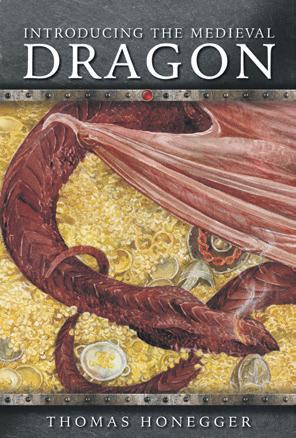
and geo-spheres over the last 4 billion years. I explore the evolution of the stabilising homeostatic mechanisms and other emergent properties arising from these energy revolutions. I then summarise the background to the seventh revolution, the response to anthropogenic climate change. This is the revolution in which we are now embroiled but whose outcome is profoundly uncertain.
I highlight six critical step changes in the transformation of energy into material complexity, suggesting that these have led to the overwhelming global dominance of Homo sapiens and have shaped our society and indeed the whole of the biosphere. These transformative events were: (1) the energising of the first living cell(s); (2) the harvesting of the Sun’s incoming radiant energy; (3) the evolution of complex, eukaryotic cells with substantially more energy per gene; (4) the investment of addition food energy in the complex and powerful hominid brain; (5) the acquisition of more energy for human society through settled agriculture; and, finally, (6) the use of fossil hydrocarbon fuels to fire the Industrial Revolution.
These ‘revolutions’, especially the early ones, were very slow-burning affairs, stretching over vast periods of time and, in each case, the dominant system of the previous regime retained its biological, geological and social significance. Each ‘revolution’ was not a single event but a complex series of changes and innovations that together made for a step change in the history of our planet. These six events were the planetary game changers.
Homo sapiens has emerged globally dominant from these energy revolutions. Paradoxically, this dominance is now both threatening and being threatened. The lifestyles of the affluent and aspirational classes, the main beneficiaries of the sixth revolution, are open to being undermined by the impacts of their own GHG emissions and by climate change and Anthropocene degradation. The lives of the very poor, who have benefited least, are being made even more precarious.
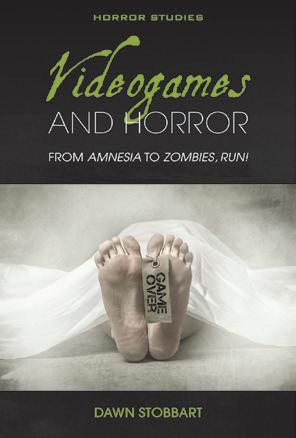
It is important to appreciate the scale of human energy demand in a country such as the United Kingdom. In the fourth revolution beginning only about 2 million years ago, the investment of some 500 food calories per day (only an additional 0.6 kWh per person per day) in extra neurons and in brain power was the catalyst. It levered in, after two further energy revolutions, astounding human power, technical prowess and material wealth. The resulting energy demand is nothing short of staggering. In Britain, Mackay has estimated the average individual energy use in 2007 to be some 195 kWh of energy per day, equivalent to ~250,000 kcal/food calories a day. That is a total average individual energy demand 100 times our basic metabolic requirement and at least 50 times more than that which supported our ancestors. Some over a certain age will remember sitting in front of a single-bar electric fire on winter’s night trying to keep warm. For them, this comparison may be useful. A onebar electric fire uses 24 kWh a day. So it is as if we have about eight such fires running continuously, day and night, all year long to support our individual lifestyles!
The human metabolic requirement is only about 2.2 kWh per day. Mackay, more generously and realistically in the modern world, allowed us 2,600 kcal per person per day—that is 3 kWh each. In the developed world, meeting this basic need requires a substantial investment of energy in farming, fertilisers, agrochemicals and the food supply chain equivalent to about 15 kWh per day per person. This reflects the disparity between our primary food energy requirement and the energy inputs into the agricultural and commercial systems that supply us. However, our primary food-energy budget is dwarfed by the totality of terrestrial and marine transport, space heating and cooling, air travel, industry and just consuming.
Given the huge inequalities in wealth and lifestyle, the energy and consequently CO2 footprints of the jet-setting elite from any country must be at least double, probably treble, the mean, even in the ‘rich’ countries. Energy use permeates all aspects of modern life. This, as we have discussed, is supplied largely by burning fossil fuels. Regrettably, it appears that the non-catastrophic resolution of one of humanity’s gravest problems, global warming, is made more difficult by nature of the homeostatic mechanisms that have historically modulated human behaviour. In our highly charged, digitised, atomised, global free market, I fear that the mechanisms, although well adapted to ensuring our survival as hunter-gatherers or as small farmers in small tight rural and even latterly in urban communities, seem inadequate, even redundant.
It must not be imagined that our dependence on hydrocarbon fossil energy has reduced our dependence on the world’s
ENVIRONMENTAL SCIENCE | ISSUE 6 | PAGE 14
This extract is taken from the Prologue and Introduction … continued in the book
Revolutions and the Challenges of Climate Change University of Wales Press, Cardiff, 160pp, Softback, 9781786834232, 138mm x 216mm, 16 b/w figures and 3 tables, October 2019, RRP £16.99
to Booklaunch
the same publisher
R. Gareth Wyn Jones is an Honorary Fellow of Bangor University, and an Emeritus Professor. He was formerly Director of the Cente of Arid Zone Studies and a Professor in Bangor’s Schools of Biological Sciences and Agricultural and Forest Sciences. He has enjoyed a long association with the university, initially as a student under Professor Charles Evans FRS, as well as periods working in Vancouver, Los Angeles, Tel Aviv, Wurzburg, Sydney and Aleppo
Subscribe
www.booklaunch.london/subscribe From
Our price £16.99 inc. free UK delivery To buy this book, visit www.booklaunch.london/sales or point your smartphone here
Lot 1
After Marc Chagall (Russian-French, 1887–1985)


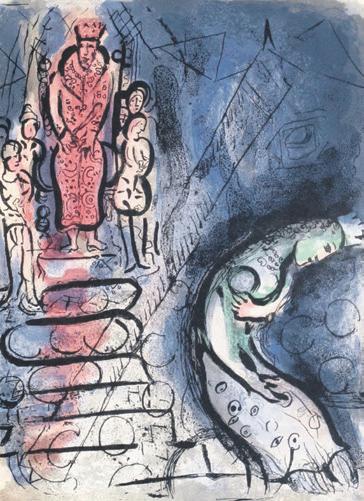
Variety of 15 colour lithographs from the “Bible” series, by Meyer Shapiro and Jean Wahl, printed and published by Moulot Frères, Paris (1956). Largest 26.4 cms x 35.3 cms. Unframed. £150 each
Booklaunch art
Literary art for sale. Contact: rights@booklaunch.london
Lot 2 Ron Tunison (American, 1947–2013)
PORTRAIT HEAD OF DYLAN THOMAS
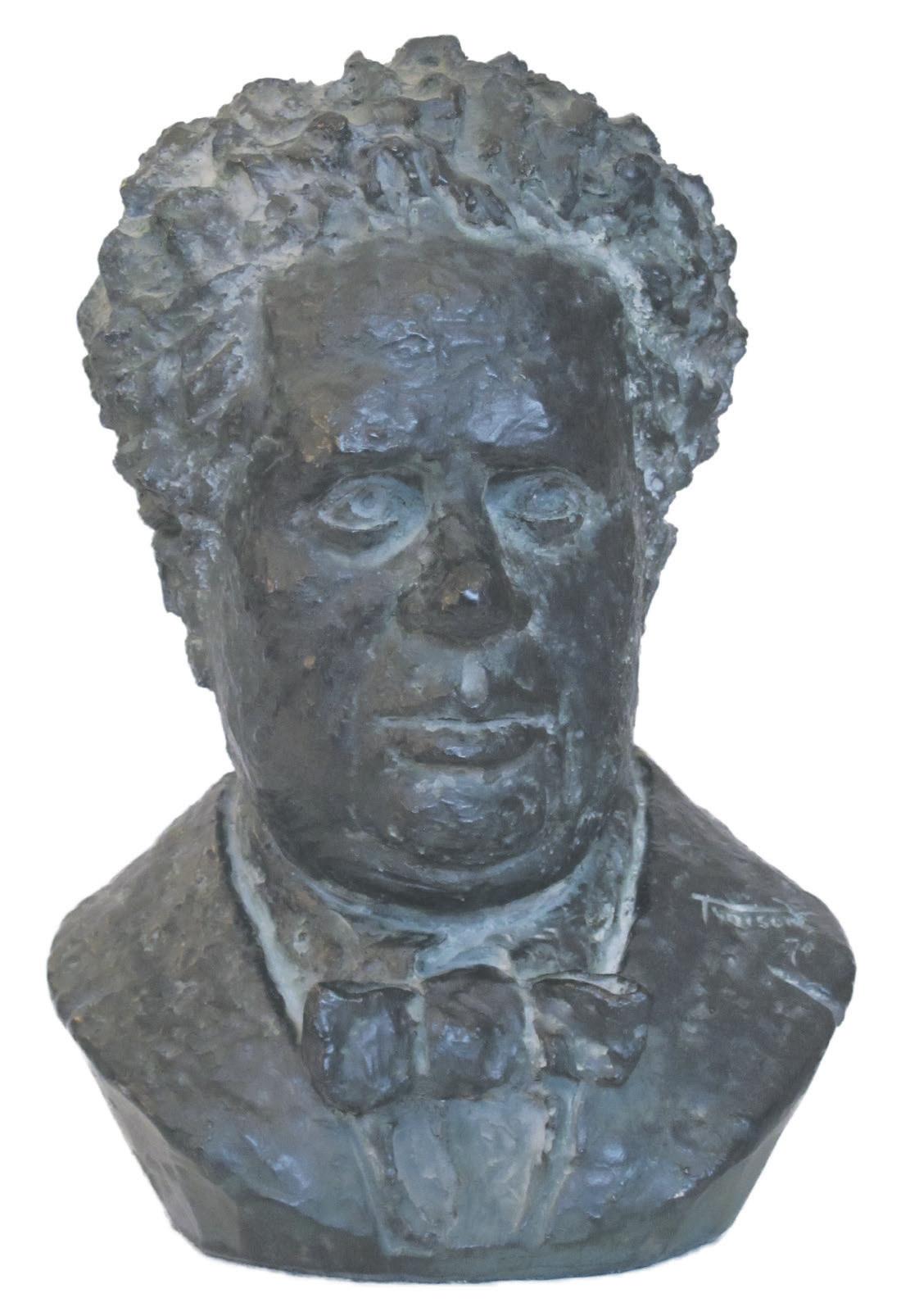
Signed and dated “Tunison/70” on left shoulder, resin.
37.5 cms high £1,470
Lot 3
Leopold Gould Seyffert (American, 1887–1956)
PORTRAIT STUDY OF W.H. AUDEN

Signed l.l. and inscribed “W.H. Auden” l.r., charcoal. 35 cms x 44 cms. Framed. £1,750
Lot 4
Tom Espley (1931–2016), after John Singer Sargent
PORTRAIT OF HENRY
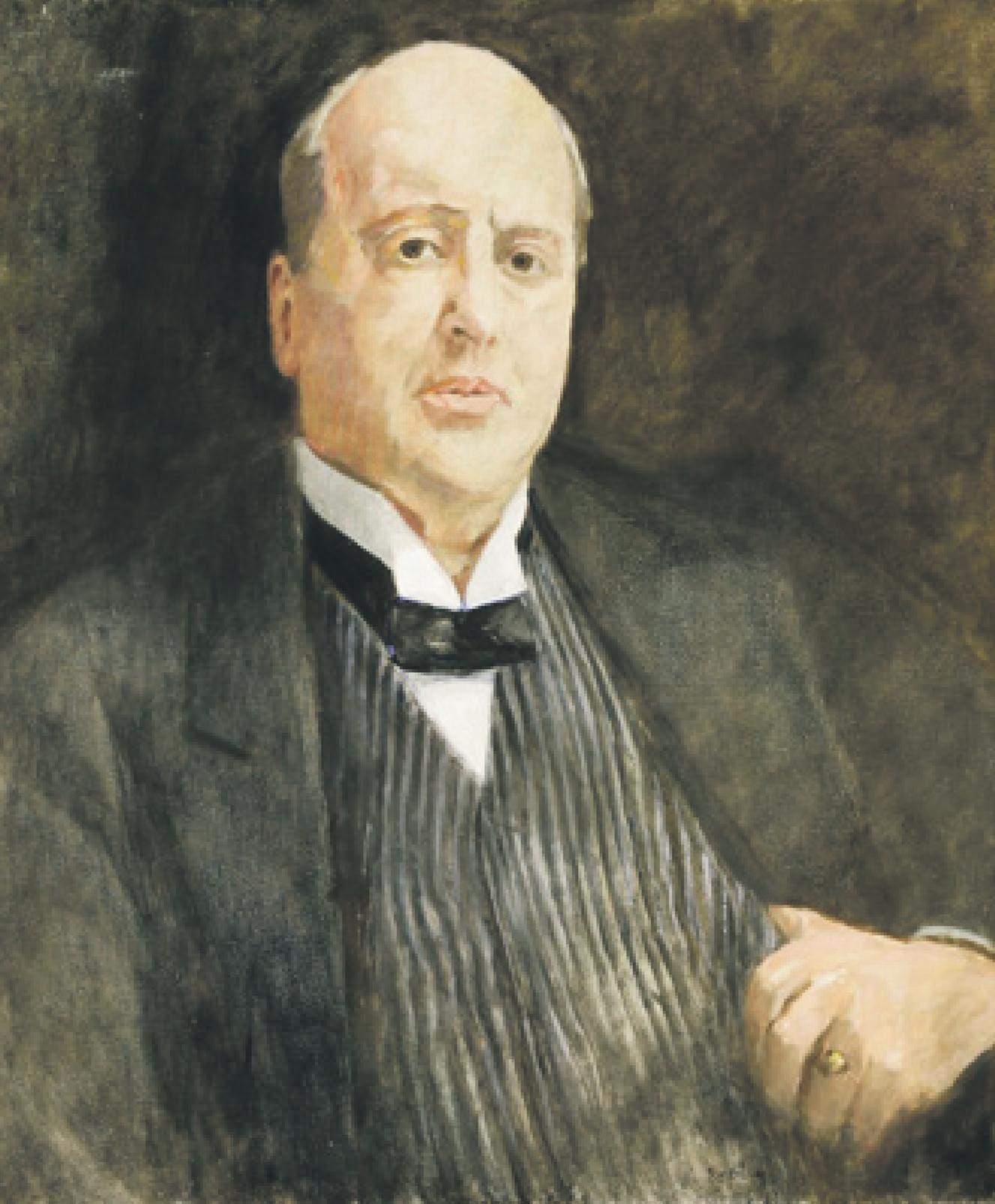
JAMES, HALF LENGTH
Signed l.r., oil on canvas. Framed.
£975
Lot 5 Peter Edwards (b. 1955)
PORTRAIT OF TED HUGHES, BUST LENGTH IN PROFILE
Signed and inscr. on stretcher verso “Ted Hughes by Peter Edwards in Oswestry 1993 for the centenary of Wilfred Owen’s birth”, oil on canvas. 60 cms x 60 cms. Framed £1,350

LITERARY ART | ISSUE 6 | PAGE 15
1 2 3 4 5
Debt and Entanglements Between the Wars

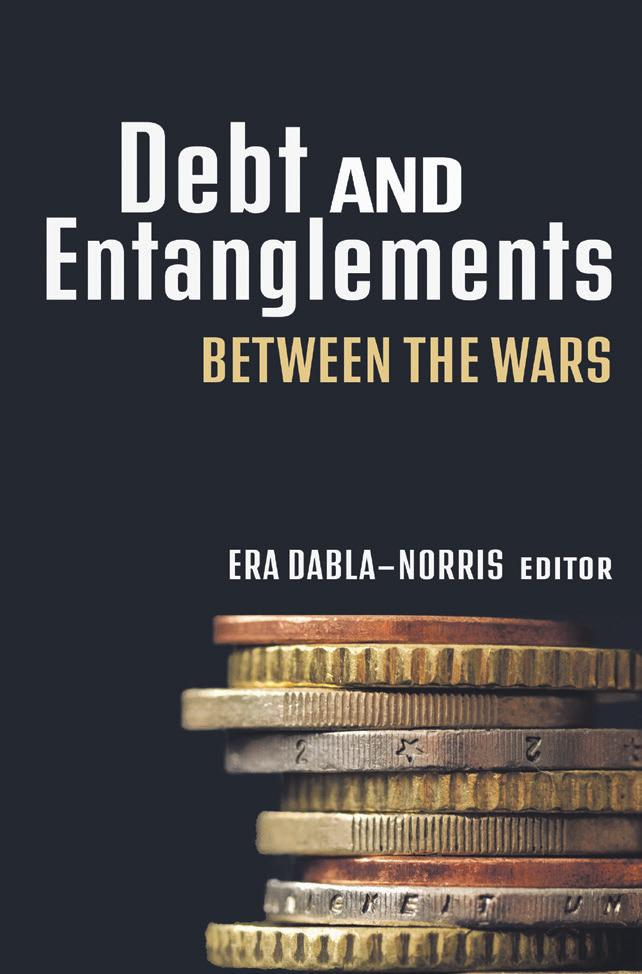 Edited by
Edited by
Era
Dabla-Norris
The seven chapters in this book—about the United States (US), the United Kingdom (UK), the four Dominions of the British Commonwealth (Australia, New Zealand, Canada, and Newfoundland), France, Italy, Germany and Japan—describe how, by affecting fiscal policy, political and economic interests influenced alliances, defaults or quasi defaults and the unwinding of debts. The distinct domestic and external debt securities issued by these countries and the intricate network of sovereign debts and credits that emerged at the end of World War I (WWI) underpin our analysis.
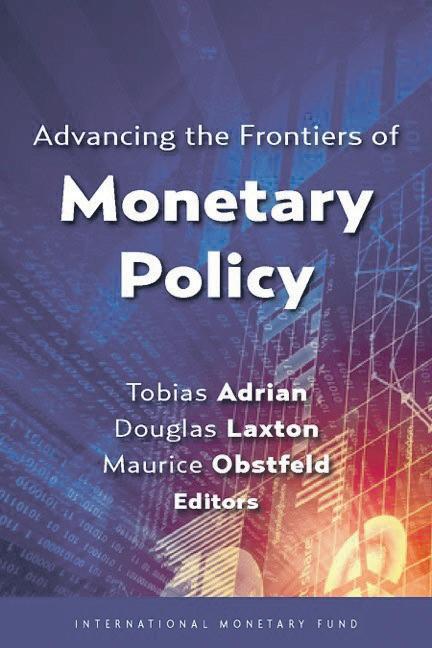
The interwar years offer an exceptionally rich laboratory for studying international monetary and debt policies. With the onset of WWI, the unprecedented trade and capital flows seen in the prewar period of globalization ceased, and the gold standard was suspended. But the war also proved to be a watershed for sovereign debt. The US emerged as a major creditor nation; the governments in Europe were swamped with debt. The victors had borrowed to win, and the losers were saddled with reparations. Buoyed by the fragile monetary and trading system assembled in the 1920s, American banks entered a period of massive international lending to allies and belligerent governments alike, partly intermediated by British banks. The boom in private and sovereign credit ultimately ended spectacularly in a crash, turning a financial panic into a worldwide depression.
subsidies by the early 1930s.
The chapter on the UK presents a narrative account starting with the forces that contributed to the beginning of the end of British hegemony. As the country with the deepest financial markets, the UK borrowed to finance its own war efforts; it also extended loans to its colonies and other allies in Europe. On the domestic front, conversion provisions by financial players in London left the government more heavily indebted than it needed to be at the end of the war. On the external front, the decision to borrow from the US to finance the war and the emergence of the US at the epicentre of the international debt network heralded the end of British financial might.
The four Dominions of the British Commonwealth offer case studies of external dependence, boom-bust cycles, macroeconomic adjustments, bailouts and restructuring not unlike those seen today. Once overseas lending dried up, what bound them to London (New York in Canada’s case) was ‘the crushing weight of accumulated debt’ (Cain and Hopkins 2016). All four Dominions faced difficult choices between honouring debts and selectively defaulting on their domestic and external debt obligations and on contracts denominated in different currencies. This chapter documents the trade-offs they faced.
The years that followed the First World War are a rich source for the study of monetary and sovereign debt. They are also an object lesson. The absence of effective mechanisms for collaboration and resolution in this period had disastrous consequences for the entire global economy. Analysis of the economic aftermath of war in Western and westernised countries provides unique insights into how politics and policy influenced alliances, defaults and the unwinding of debts
The decades after WWI are replete with instances of commodity price busts, financial catastrophes, hyperinflations and deflations, devaluations, protectionist pressures and stabilizations—both failed and successful. The ensuing implications for debt management, restructurings and repudiations of domestic and external loans were similarly momentous. And although today’s circumstances are undoubtedly different from those experienced in the past, parallels exist with the historical episodes covered in this volume. Taking stock of past events can thus provide insights into the theories, opinions and interests that motivated how governments managed situations that resemble ones that we confront today, as well as those that lie ahead.
The country narratives exploit granular information on the nature, size and characteristics of public debt instruments and the purposes for which they were issued. This offers unique insights into how countries managed their debt, its composition and the role that debt conversions and restructurings played. In theory, a sovereign debt contract is an ownership title expressing a claim on part of a state’s future revenue. These claims transcend international borders. In this respect, the comprehensive inventory of domestic and external debt instruments assembled can shed light on the linkages among debt, macro-economic policies and the political interests they create.
WHAT DOES THIS BOOK COVER?
In each of the countries covered in this volume, fiscal policy and its distributional impacts grew in importance as questions regarding who would pay for postwar reconstruction and how to cope with fallout from the depression came to the fore. This boiled down to the questions of whom to tax and how much. However, the international dimension was equally relevant. Large government debts politicized issues about units of account, monetary policies and exchange rate policies. Indeed, inflation and deflation fueled the debate surrounding currency stabilization—namely the level at which to peg the currency to gold—and the resulting implications for creditors and debtors. Ultimately, domestic politics and international entanglements shaped the constellation of fiscal-monetary and sovereign debt outcomes observed during this period, a connection highlighted in this book.

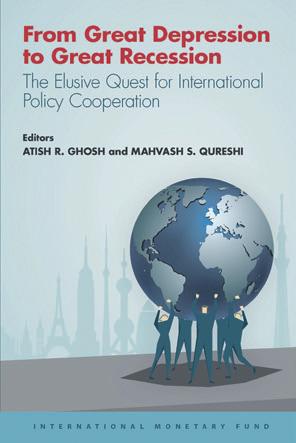
The chapter on the US constructs a quantitative account of Henry Carter Adams’s (1887) ‘political complications sure to come with an extension of international credits’ by the US during WWI and the absence in 1914 of ‘a clearly [US] formulated policy, upon which the public may rely’. WWI and the emergence of New York as a major financial center led to investment decisions by private US citizens that influenced US foreign policy and federal expenditure, monetary, debt management and taxation policies in unintended and long-lasting ways. The impact of these decisions for belligerent and Allied countries was no less consequential. Ultimately, what began as foreign loans by the US during the war became
The chapter on France examines how the country answered the ‘who should pay’ question to reduce its sizeable debt overhang during the interwar period. In the 1920s, France partially taxed away its large pile of domestic debt through inflation. Budget deficits were predicated on the premise that reparation payments from Germany would eventually permit the retirement of any new debt. When these payments failed to materialize, higher deficits were covered by printing money. But the government also resorted to short-lived austerity measures and a wide range of debt management tactics to keep the sovereign afloat.
On August 18, 1926, amid speculative attacks on the currency, Benito Mussolini declared that he would defend the exchange rate ‘whatever the cost’. This chapter documents how altering the cost and composition of the country’s debt was an integral part of the strategy to achieve the exchange rate objective. In an environment of weak tax capacity, the government required banks and other captive financial institutions to hold debt at artificially low interest rates. This was tantamount to a tax on savings.
The chapter on Germany documents how a sovereign can try to ‘camouflage’ its fiscal position in an attempt to obfuscate the extent of its financing needs and level of indebtedness. With memories of the Weimar hyperinflation still fresh, the Nazi government resorted to creative accounting and domestic financing mechanisms that deliberately misrepresented its fiscal position. It manipulated fiscal data and price indices to misinform the public about the underlying inflationary pressures from rearmament. It misled foreign creditors on its intentions to service reparations and external loans. Exchange controls formalized a default on foreign obligations, even as bilateral trade negotiations were used to play creditors against one another.
The chapter on Japan relates the nation’s experience in the interwar period in the form of a narrative in three acts. In the first act, monetary dominance and fiscal discipline were anchored by a desired return to the gold standard and the ambition to internationalize the currency. The second act, characterized by monetary subordination and cooperation to aid economic recovery, followed in the wake of the worldwide depression. The final act was one of fiscal dominance amid capital controls and limited access to international markets. The result was a significant debt overhang and one of the longest quasi-sovereign default episodes in history.
The sequence of macroeconomic events and debt and economic crises described in the chapters are country specific but common economic forces and disturbances were clearly in play. The narratives also illustrate how the absence of effective international collaboration and resolution mechanisms can amplify shocks and inflict enormous damage on the global economy. The interwar period saw recurrent failures of international cooperation. Often, policymakers seemed to be mostly looking backward, hoping to reconstruct pre-WWI monetary and trading arrangements. But that world was lost. In 1944, at Bretton Woods, the delegates with the voices that counted were looking forward and wanted to create something new.
Nevertheless, the fundamentals of international sovereign debt politics endure.
ECONOMIC HISTORY | ISSUE 6 | PAGE 16
Contributors: George Hall, Thomas J. Sargent, Martin Ellison, Andrew Scott, Harold James, Era Dabla-Norris, Vitor Gaspar, Marina Marinkov, Nicolas End and Mark De Broeck, Series: IMF Publications, International Monetary Fund, Washington, Softback, 9781513511795, 152mm x 229mm, Illustrated, December 2019, RRP $27.00
From the same publisher
Era Dabla-Norris is a Division Chief in the IMF’s Fiscal Affairs Department. She is currently working on issues pertaining to structural reforms and productivity, income inequality, fiscal risks and spillovers, and demographics and fiscal dynamics. Since joining the IMF she has worked on a range of advanced, emerging market and low-income countries and published widely on a variety of topics
Our price $27.00 not inc. free UK delivery To buy this book, visit www.booklaunch.london/sales or point your smartphone here Subscribe to Booklaunch www.booklaunch.london/subscribe
THE UNITED KINGDOM
by Martin Ellison, Thomas J. Sargent and Andrew Scott
The United Kingdom was the world’s economic superpower at the beginning of the 20th century, able to call on the significant resources and wealth of an industrialised economy and the expansive British Empire. However, it was singularly unprepared for the events that unfolded in the summer of 1914. Militarily, the UK had been falling behind in the arms race with Germany from 1900 to 1913, primarily as defence spending failed to keep pace with global trends. Financially, London had great difficulty coping with the international scrimmage for liquidity when the Austria-Hungary ultimatum to Serbia caused market perceptions of the risk of war to shoot up on Thursday, July 23, 1914. Foreign exchange and money markets broke down early the following week and, even though the Bank of England raised the bank rate from 3 percent to 8 percent, on Friday, July 31, the London Stock Exchange closed for the first time in its 117-year history. It was not to open again for five months. Thus, the UK government found itself in dramatic need of increasing its military expenditure at the same time that its financial infrastructure became impaired.
The extent of the problem facing the UK government is illustrated by the fact that in the fiscal year 1912–13, defence spending was £72.5 million (3.1 percent of GDP), a proportion of GDP that had remained largely unchanged since the end of the Second Boer War in 1902. By fiscal year 1914–15, defence spending had increased to £437.5 million (14.9 percent of GDP) and by 1915–16 to £1.4 billion (40.8 percent of GDP), a level where it remained until 1918–19. Only after the end of demobilisation in 1923 did defence spending return to pre-war levels as a proportion of GDP.
The exigencies of war meant that almost all defence spending from 1914–19 was through Votes of Credit that granted lump sum funds to the Treasury to be spent on the Navy, Army and Ministry of Munitions as the government best decided, without the prior approval of Parliament. The increase in defence spending during 1914–18 was partially offset by other line items in the government budget not keeping pace with the GDP of the wartime economy. Most notably, spending on education fell from 2.4 percent to 1.3 percent of GDP and spending on transport fell from 2.0 percent to 0.9 percent of GDP. Overall, civil spending decreased from 10 percent to 5 percent of GDP during the war, although it rebounded quickly afterward.
Taxes were raised to provide ongoing financing for the war. First to rise were income and property taxes, which went from producing £44.8 million in fiscal year 1912–13 to bringing in £239.5 million in 1917–18 (£134.8 million at 1913 prices) and £398.8 million by 1921–22 (£213.3 million at 1913 prices). This was partly due to an increase in the standard rate of income tax from one shilling, two pennies in the pound (5.8 percent) to six shillings in the pound (30 percent) but also because expansion in coverage meant an extra 2.4 million people became eligible to pay income tax.
In fiscal year 1914–15, the government introduced a new Excess Profits Duty to tax what it deemed ‘excessive’ business profits at 50 percent; by 1917–18 the duty had risen to 80 percent, and receipts amounted to almost one-third of government revenue.
Over the period 1914–18, the total take from income and property taxes more than trebled, from 3.0 percent to 9.6 percent of GDP. Later to rise were indirect taxes, mostly through increases in customs and excise duties on basic commodities and luxury goods. However, the increase in defence spending during the Great War massively dominated the impact of this reduction in civil expenditures and higher taxes. The result was the government’s gross primary deficit being propelled to unprecedented levels as a proportion of GDP. The gross primary deficit was at its maximum in 1917 and 1918, cumulating to 148 percent of GDP over the period 1914–19. Although deficits of this size were short lived, the strain they put on the UK economy and London financial markets was extraordinary.
The modern concept of ‘fiscal space’ favoured by the IMF (2018) and the Organisation for Economic Co-operation and Development (OECD) stresses the capacity for governments to raise spending or cut taxes while assuring financial market access and debt sustainability. With its fiscal space limited in 1914, the UK government had little alternative but to increase either borrowing or the money supply. Britain came off the gold standard with the Currency and Bank Notes Act of 1914, and the monetary base did indeed almost double
from £288 million in 1914 to £531 million in 1918. However, the subsequent upsurge in inflation and depreciation of the pound tempered any desires the government may have had to print more money to further increase the money supply. Instead, the primary deficits of 1914–18 were largely funded by borrowing in domestic financial markets and through intergovernmental loans. The difficulties in doing so contributed to the beginning of the end for British hegemony and are the subject of this chapter.
FUNDING THE GREAT WAR
In 1914 the face value of the UK national debt stood at £706 million, having fallen steadily relative to GDP since the 1820s. The early years of the conflict led to the face value of debt rising to £2,190 million by 1916, mostly due to the government issuing war loans on the London Stock Exchange (+£963 million) and extensive use of floating debt (+£573 million, the majority in Treasury Bills) to pay for military expenditure. Subsequent years saw additional war loans issued, further expansions in the use of floating debt and the arrival of external financing from foreign governments.
By 1919 the total debt was £7,481 million, the increase since 1916 driven by issuance of securities specific to the war (+£2,818 million), floating debt (+£826 million), and external funding (+£1,292 million). The nominal face value of the national debt remained relatively stable after 1919, albeit with increased emphasis on issuing short-dated Treasury bonds with a maturity of one to two years, rather than longer-dated securities explicitly tied to the war.
Although there was stability in the nominal value of debt in the 1920s, the value of debt as a percentage of GDP continued to rise due to falling prices and recurrent recessions that combined to depress nominal GDP. Other internal debt not quoted on the London Stock Exchange gained greater prominence with the successful retail launch of National Savings Certificates in 1921.
THE DOMESTIC EFFORT
The prospectus for the first Great War Loan was published on November 17, 1914, accompanied by a widespread advertising campaign encouraging the general public to buy war bonds to help the war effort. The price of issue was £95, with interest at 3½ percent payable half-yearly on March 1 and September 1. Redemption was scheduled at par on March 1, 1928, although the government reserved the right to redeem the loan at par any time on, or after, March 1, 1925, subject to giving at least three months’ notice. The amount issued was £350 million, of which £100 million was placed prior to publication of the prospectus. The first Great War Loan was not a success as it attracted only £91 million of funding from a very narrow group of investors.

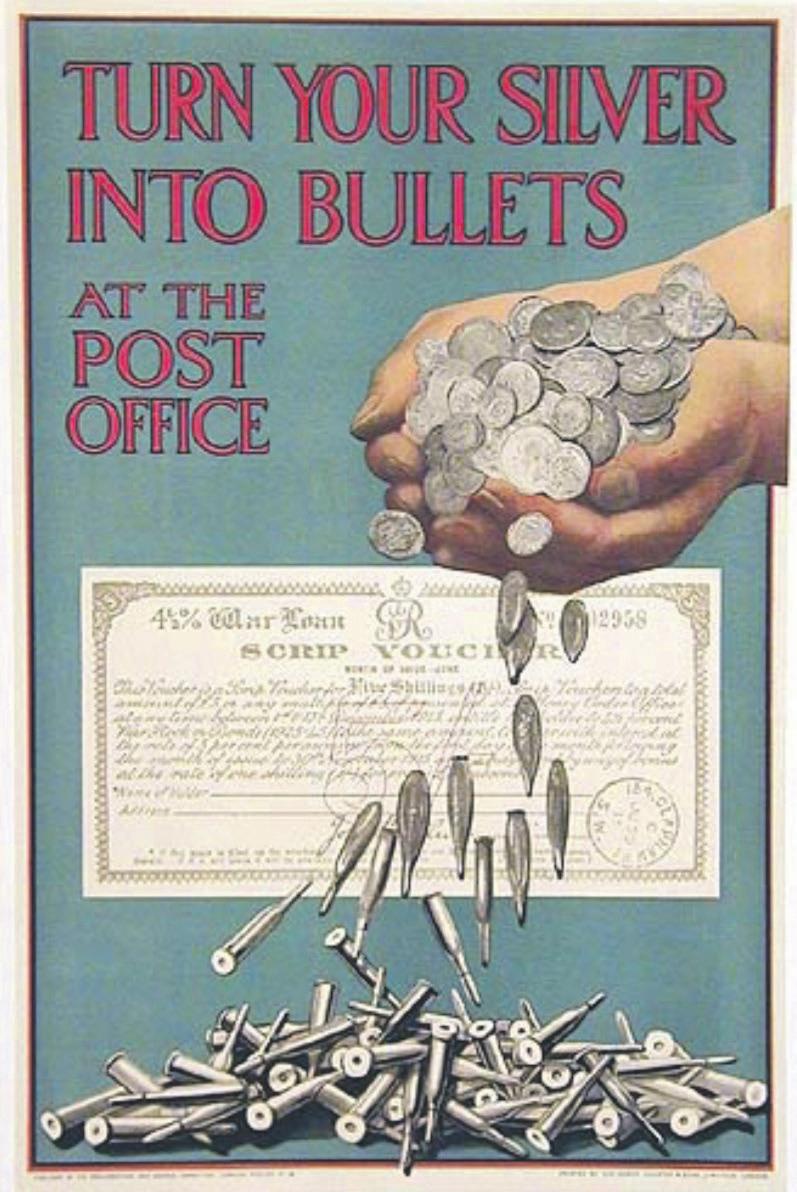

The second Great War Loan was issued on June 21, 1915, at a price of £100, paying a coupon of 4½ percent and redeemable at the earliest on December 1, 1925, and at the latest on December 1, 1945. The higher coupon payment reflected the increasing quantity of funding required and the need to compensate financiers for wartime inflation. Unlike when the first war loan was issued, subscribers also benefitted from being offered an additional option to convert some of their existing holdings of government securities into the second war loan. For example, it was possible to exchange £100 of the first loan into £100 of the second loan for a one-off payment of £5. Given the superior interest rate paid on the second loan, it was not surprising that the option to convert proved wildly popular. Of the £901 million total face value of the loan, only £611 million was new money since £137 million came from conversion of the first war loan and £176 million came from the conversion of existing 2.5 percent and 2.75 percent Consolidated Stocks. The option to convert was extremely valuable to financiers, especially since the prospectus also contained a pledge of future convertibility should the government need to issue debt at a still higher interest rate:
In the event of future issues (other than issues made abroad or issues of Exchequer Bonds, Treasury Bills, or similar short-dated securities) being made by His Majesty’s Government, for the purpose of carrying on the War, Stock and Bonds of this issue will be accepted at par, plus accrued interest, as the equivalent of cash for the purpose of subscriptions to such issues.
On June 11, 1917, the government published the prospectus of the
… continued in the book
ECONOMIC HISTORY | ISSUE 6 | PAGE 17
This edited extract is taken from the Preface, by Era Dabla-Norris and Vitor Gaspar, and Chapter 2
Source: UK government
Entrusted Ong Boon Hwee and Mark Goyder
Stewardship for Responsible Wealth Creation World Scientific Publishing Company, London and Singapore, 260pp, Softback, 9789811207563, 152mm x 229mm, 2 October 2019, RRP £19.99
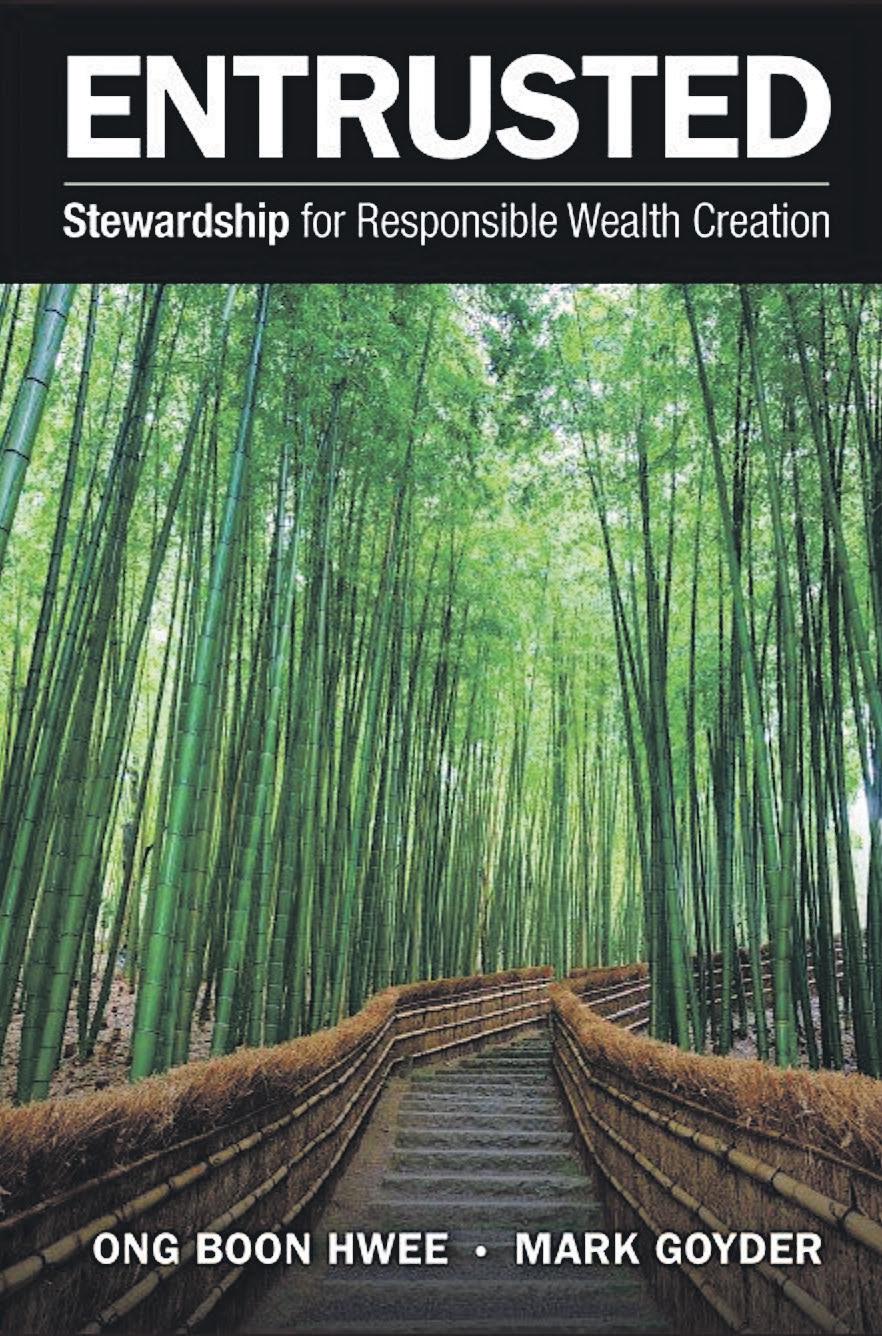
One of the first things that the chair of a listed company may do upon appointment is to write to the top twenty institutions which hold shares in the company and offer to meet them. A few meetings may follow. Typically, many institutions will reply, saying that they see no need to meet at the present time, but will be in touch if this changes.

The board represents the owners and needs to behave like steward leaders. But what if the owners of the shares fail to behave like stewards? For stewardship to work, a critical mass of owners needs to be engaged and responsible. If everyone owns but a minute percentage of a company, there is little capacity or incentive for anyone to be a responsible owner. An engaged institutional investor may well ask:
‘Why should I do the heavy lifting when the benefits of my efforts are spread across a large group of investors who haven’t lifted a finger to get involved?’
In listed companies, the dispersal of shareholding and the passivity of most shareholders have in the past combined to make it easier for irresponsible CEOs to take undue risks or to negotiate unjustified remuneration packages. With honourable exceptions, those investors who sense that the company was on an unsustainable path are likely to sell their holdings rather than work with others to put things right.
The short-term benefits of wealth creation are vastly outweighed by the long-term costs—climatic, polluting and invasive. Can the damage now be repaired? Ong Boon Hwee and Mark Goyder argue that we need a new form of capitalism that respects life instead of exploiting it. Their keyword is “stewardship”, and in their new book they map out a plan for asset managers, investors, shareholders and directors to play a nurturing role


Ong Boon Hwee is the CEO of Stewardship Asia Centre (SAC), a Singapore-based centre promoting stewardship and governance across Asia. Dedicated to inspiring change, Mr Ong directs SAC’s efforts at propagating the concept of responsible wealth creation so that organisations can benefit the wider community and future generations

Mark Goyder is the founder and trustee of Tomorrow’s Company (TC), a London-based business think tank which he led until his retirement in 2017. TC works with business leaders, investors, policymakers and other partners to champion the importance of business purpose beyond profit, and to lead businesses to be a force for good

The dispersal of shareholding can undermine stewardship. The more dispersed the shareholding, the harder it is for the shareholders to act as an effective body capable of holding executives and the board to account, and to exercise stewardship. In a recent post, Goethe University’s Professor Katja Langenbucher summarised the difficulties:
Shareholders’ interests vary greatly. We find shareholders betting on a corporation’s stock price going down. We find others prepared to support measures which will lead to stock prices going up for the short-term only. We find shareholders uninterested in the corporation, holding shares only due to an index tracker or investment advice. We find yet others heavily invested in keeping a low-risk investment over a very long time span. Out of the broad spectrum of possible management strategies, each option will cater more to the taste of some than of others.
SEEK OUT STEWARD SHAREHOLDERS
The best boards insist that the firm seek out investors who have stewardship intent. They are usually the long-term investors which may include state-owned entities, sovereign wealth funds, pension funds, insurance companies, wealthy families and private group investors like Berkshire Hathaway. The board will want to know whether the company has sought to attract more steward investors so as to create stability of ownership and make stewardship more effective. What is the optimal proportion of the total share register that should be made up of steward investors? How can the board engage the steward investors to help the company think about issues of future appointment of non-executive directors and CEO succession?
INVOLVE SHAREHOLDERS IN THE BOARD NOMINATION PROCESS
There has been one particularly effective innovation in Europe which has helped to achieve a more thorough involvement of institutional investors while still respecting the rights of smaller shareholders. This is the Swedish system of nomination committees.
The asset managers who hold shares in listed companies on our behalf are busy people. They may hold hundreds or thousands of shares around the world. When time is short, delegation is essential. The key to good delegation is to ensure that the right board is in place so as to be good stewards of the business. But in modern stock markets, one often finds that the largest shareholder holds only 1 or 2 per cent of the shares. In such a scenario, there is no natural sense of stewardship where one can actually gather a significant chunk of owners in the room. What good stewardship needs is disparate shareholders working together. This is difficult. It needs to be made easier, and the larger of those investors need to make it more of a priority, especially in the key issue of director nomination.
The chairs of some listed companies seem to have
the power to nominate directors with all the imperiousness of a maharajah. They are often heard saying that the decision to appoint new directors must be the chair’s because the chair is responsible for the effective operation of the board. Such a statement flies in the face of the legal position. Under company law, the shareholders elect the directors.
In most companies, there is a board nomination committee whose task is to vet candidates and guide the process, but this remains strictly a board process. Too often, it is a formal endorsement of the wishes of the chair. Even with more independent thinking in the nomination committee, the process is in danger of creating a self-perpetuating oligarchy. Directors decide who their new colleagues should be, and then put their nomination through the formality of the shareholder vote. With shareholding so dispersed and passive, the directors are the ones who propose and the shareholders ‘rubber-stamp’ the choice.
In Sweden, however, there is a different approach. The board nomination committee is formed by representatives of the largest investors in the company. The chairman of the company attends but does not chair this nomination committee. The result is that major institutions can come together to work as stewards of a company in ensuring that it has the right board. The Swedes were inspired, ironically, by the report in the UK by Sir Adrian Cadbury in 1992 on the financial aspects of corporate governance. On reviewing their system in light of this report, they moved away from the self-perpetuating oligarchy. They decided that since the formal expectation under company law is that directors are chosen by investors, they should set up an investor-led nomination committee, on which all the major (steward) investors sit.
In principle, there is nothing to stop any listed company from implementing the arrangements which operate in Sweden. The rules could be framed to ensure that minority shareholders are fairly represented on the nomination committee. Where there are shareholder organisations set up to represent individual shareholders, they could be granted a representative on the nomination committee. In companies and countries where trade unions represent the legitimate voice of employees who have no formal right of representation, they could be offered a place on the nomination committee. Where employees have shares in the company, they too could be offered a place on the nomination committee.
In practice, just as the Swedish system evolved in stages, it might make sense for listed companies to experiment first by inviting major (engaged and responsible) shareholders to nominate representatives to serve on their nomination committees. The most important learning point is that the nomination process is a good catalyst for bringing together the major investors to make a shared assessment of the company’s situation, as well as for working together in a more proactive way than is experienced at present.
PLAN A PROGRESSIVE SHIFT TOWARDS MORE STABLE OWNERSHIP
Many of the most enduring companies have designed their structure to ensure stability of ownership. Tata and Sons is a good example. Over 150 years on from its formation, Tata has survived and thrived by combining stable ownership by family trusts at the group level with individual companies below group level, each of which is a major firm in its own right, with stock market listing but with Tata and Sons holding a significant shareholding.
Tata and Sons is the product of a unique vision faithfully pursued over generations. Listed company boards battling conflicting demands of dispersed shareholding might ask themselves how they can solve the problem without Tata’s unique history and constitution. It is important to challenge the assumption that a company’s ownership and business form are unchangeable.
Handelsbanken is an example of this dynamic approach to business form. Handelsbanken is a prudent bank which survived the global financial crisis without a bailout. In 1973, a particular form of a profit-sharing scheme was introduced. When Handelsbanken met its goal of having a higher return on equity than the average for other listed Swedish banks, a profit share was paid to a foundation named Oktogonen, which kept its fund entirely in Handelsbanken shares. Payment took place only after retirement, which means that all employees were interested in securing the long-term profitability of the bank. The growth in value can only be enjoyed by an employee once he or she reaches the age of sixty. This helps
BUSINESS & MANAGEMENT | ISSUE 6 | PAGE 18
This extract is taken from Chapter 5: The Board as Steward, pages 112–118 … continued in the book
to Booklaunch!
From the same publisher
Subscribe
www.booklaunch.london/subscribe
Our price £19.99 inc. free UK delivery To buy this book, visit www.booklaunch.london/sales or point your smartphone here
‘Oxford ethicists promote MDMA to combat divorce.’
At least, that’s what a blogger at Dose Nation said we were doing when we first started writing about the chemical enhancement of love and relationships. The blogger was referring to an interview we’d done with The Atlantic, where we argued that certain psychoactive substances, including MDMA—the key ingredient in the party drug Ecstasy—might help some couples improve their connection if used in the right way.
The truth is, we were not promoting the use of MDMA outright. We were calling for research into this possibility while exploring its ethical implications for individuals and society. The same aim, bolstered by the latest data and insights from the cutting edge of bioethics, applies to our new book.
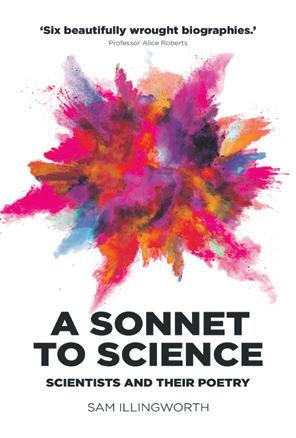

This time our call for research is more urgent. MDMA, along with psychedelic drugs like psilocybin (from ‘magic’ mushrooms) and even lysergic acid diethylamide (LSD), are moving quickly into the centre of mainstream medicine. Receptive pieces by hard-nosed journalists and science writers are coming out almost daily. In the New York Times alone, there have been articles on the ‘Promise of Ecstasy for PTSD’, the benefits of ‘Magic Mushrooms’ for depression in cancer patients, and the potential of LSD as a treatment for alcoholism and anxiety.
Ten years ago such coverage would have been confined to fringe sources. But now with a stream of smaller studies practically flowing out of labs at Imperial College London, Johns Hopkins and other major institutions, things are starting to change. Phrases like ‘paradigm shift’ are beginning to creep into the titles of research reviews on the science of drug-assisted psychotherapy.
Our Atlantic interview came out in 2013. This was two years after the first pilot study on MDMA for posttraumatic stress disorder (PTSD) made its way to publication. PTSD is an often disabling condition that can develop in response to violence, including exposure to killing and bloodshed in warzones. It has been a widespread problem in the military for decades, reaching ‘epidemic-level heights’ with the wars in Iraq and Afghanistan. As the Washington Post reports, between 11 and 20 percent of soldiers in these wars suffer from PTSD, which has ‘ravaged lives and broken up marriages’.

C. J. Hardin is one of the soldiers who has benefited from MDMA-assisted therapy. After three tours in Iraq and Afghanistan, he was numb from the stress and violence. Then his marriage fell apart. Depressed and alone, he retreated to a backwoods cabin in North Carolina. He turned to alcohol to drown his pain. He considered suicide. He tried every available treatment for PTSD, from group therapy to nearly a dozen medications.
‘Nothing worked for me, so I put aside the idea that I could get better,’ he told a reporter. ‘I just pretty much became a hermit in my cabin and never went out.’ But MDMA-assisted therapy, he says, ‘changed my life. It allowed me to see my trauma without fear or hesitation and finally process things and move forward.’
C.J. says he saw ‘a profound difference’ in his symptoms after the very first treatment. After three sessions of therapy, ‘my score on the Clinician-Administered PTSD Scale went from 87 to 7 and I no longer qualified for a diagnosis of PTSD.’
‘We can sometimes see this kind of remarkable improvement in traditional psychotherapy, but it can take years, if it happens at all,’ said Dr. Michael C. Mithoefer, the psychiatrist who conducted the early trials, in an interview. ‘We think it works as a catalyst that speeds the natural healing process.’
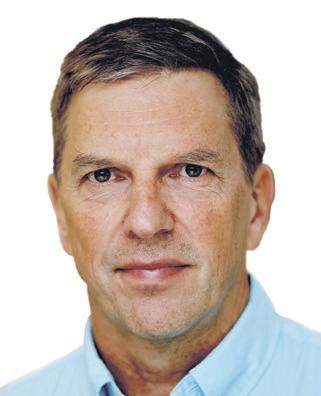
What about C.J.’s relationship? By the time he got his life back, it was too late for his marriage. There is no way of knowing how things might have gone if he’d found an effective treatment earlier. Maybe his marriage needed to end. Maybe it could have been saved and gone on to blossom. The only way to answer such questions is to ask them in advance.
LOVE, DRUGS AND MARRIAGE
‘How LSD Saved One Woman’s Marriage.’ That’s a headline from the New York Times. The reference is to a self-experiment with the drug colloquially known as acid by novelist Ayelet Waldman, as recounted in her
memoir, A Really Good Day: How Microdosing Made a Mega Difference in My Mood, My Marriage and My Life Microdosing refers to a practice now popular among Silicon Valley types of taking a tenth or so of a regular dose of a psychedelic substance on a somewhat consistent basis (say, every few days). The effects are supposed to be subperceptual: not enough to cause a full-blown trip but enough to feel ‘sparkly’, as one writer put it. And enough, apparently, to bring a troubled relationship back from the brink.
‘I was suffering,’ Waldman writes. ‘Worse, I was making the people around me suffer. I was in pain, and I was desperate and it suddenly seemed like I had nothing to lose.’ The way Waldman describes herself and her behaviour before her microdosing experiment is not flattering. She would frequently pick fights with her husband for no apparent reason, and then berate herself for having done it. Her frustration would then compel her to lash out again, making her even more despondent—‘my shame spiral screwing a hole right through our relationship’. Once she started microdosing every third day, she says, she found herself becoming a better listener, calmer and more content, less prone to conflict, more productive, less irritable, more flexible, more affectionate, and more mindful. Not surprisingly, all of this was positive for her marriage.
Waldman had a good experience. But there is reason for scepticism when you are dealing with a single account. Not only can microdosing land you in jail (it’s illegal), but there is currently no good scientific data on the benefits and risks of this habit, or even how it differs from a sugar-pill placebo. Anecdotes are not enough. What we need is careful research: the empirical kind associated with lab coats and clinical trials but also ethical and sociological studies to make sense of the moral and cultural dimensions of drug-enhanced modes of living and being.
Drug-assisted breakups may also soon be a possibility. One of us (Brian) received an e-mail from a total stranger, written in an Eastern European language. With the help of Google Translate, Brian got into a back-and-forth with his correspondent, a despondent housewife as it soon became clear. We’ll call her Sofia. Sofia was clearly desperate and seemed to be in a bad situation. She couldn’t live with her husband, she said, because he was oppressive and misogynistic. But she couldn’t leave him either, because despite all that, she loved him—really loved him—and the thought of splitting up made her despair.
Sofia knew she needed to get out of the relationship, but her heart kept saying no. So she reached out to us for a remedy, some kind of ‘cure for love’, as she put it, that would vanquish her feelings of attachment to her spouse. Freed from the bonds of a love gone bad, she might then try to start her life over with someone else. She was requesting what we call in our work an ‘anti-love drug’. Suppose Sofia took such a drug. Could it really make her fall out of love? Partly, this depends on how the drug would work. But it also depends on a deeper, philosophical question: namely, what it actually means to be in love (much less fall out of it). Some would argue that Sofia couldn’t have been experiencing real love, because she was in an oppressive relationship. This is a normative definition of love: it says that the very concept should be reserved for relationships that are essentially positive, good, or healthy. Since love is a highly valued phenomenon, this perspective goes, we should take a moral stand on what sorts of things get to count as love in the first place.
It’s a compelling argument. We have no problem with people who want to use ‘love’ in this restricted way. But it’s a risky argument as well. Once we start defining for other people what love is, we can slip into a narrow-minded and paternalistic way of thinking that discounts their lived experiences. This is not just an academic concern. Only a few decades ago it was commonly held that love between same-sex partners was a conceptual impossibility, a mistake in thought and language, since real love could only occur between a man and a woman. For a depressing illustration of this attitude, look up the YouTube video ‘Christopher Hitchens vs. Bill Donohue’. Then listen to the incredulous groaning and laughter from the audience when Hitchens makes the claim that homosexuality can be a form of love. That debate took place in 2000 in New York City. Not so long ago, and not in some far-off kingdom.
The point is that normative definitions of love often favour the group in power, and their perspective is not always justified—even if they have good intentions. The tendency to ‘medicalize’ love and say that it only really counts if
Love is the Drug Brian D Earp and Julian Savulescu
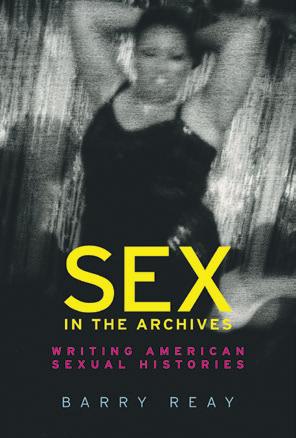
Chemicals can control our romantic lives. Relationships are already being influenced by pills we take for other purposes, and psychoactive substances may soon be prescribed to help couples work through breakups and feelings of rejection. Armed with anecdotal evidence and case-studies, this book looks at the work going on into “love drugs” and “anti-love drugs” and at the ethical issues it gives rise to

Brian Earp Brian Earp is Associate Director of the Yale-Hastings Program in Ethics and Health Policy at Yale University and The Hastings Center, and a Research Fellow in the Uehiro Centre for Practical Ethics at Oxford University. His work is cross-disciplinary, following training in philosophy, cognitive science, psychology, history and sociology of science and medicine, and ethics
Julian Savulescu is a philosopher researching the ethics of new and emerging technologies, including new methods of reproduction and enhancement of physical and cognitive performance through drugs and genetic manipulation. He is director of the Uehiro Centre for Practical Ethics at Oxford University, and is or has been a co-director on many large research projects, looking at topics from geo-engineering to vaccines
POPULAR SCIENCE | ISSUE 6 | PAGE 19
This edited extract is taken from Chapter 1: Revolution
… continued in the book
The chemical future of our relationships Manchester University Press, Manchester, pp265, Hardback, 9781526145413, 156mm x 234mm, 30 January 2020, RRP £20.00
From the same publisher
Subscribe to Booklaunch www.booklaunch.london/subscribe Save £2.40 Our price £17.60 inc. free UK delivery To buy this book, visit www.booklaunch.london/sales or point your smartphone here



































 photographs by Witold Krassowski
photographs by Witold Krassowski












































 Edited by
Edited by

















